MiG-23 fighters in Afghanistan
The Afghan war became the largest armed conflict involving the MiG-23, however, these aircraft appeared in the Air Force of the 40th Army only four years after it began. At first, it was assumed that only the participation of the forces of the closest military districts — TurkVO and SAVO — was expected, the resources of which were expected to be dispensed with to complete the seemingly simple task. By the time the Afghan campaign began in the ranks of the fighter aviation The air forces of the southern districts were only MiG-21 and only the 905th IAP in Taldy-Kurgan began to develop the MiG-23. “Twenty-third” was also present in the air defense system of the local 12th Separate Army, but it belonged to the independent form of the Armed Forces and was not involved in the formation of the 40th Army assigned to the Air Force for operations in Afghanistan (however, it did not last long to exist in its former status. During the reform of military aviation begun in January 1980, all air defense fighters were subordinate to the newly formed Air Force of the districts). The replenishment of the Air Force of the 40th Army by aviation forces of the southern districts continued in subsequent years. Even when they began to be replaced by regiments and squadrons drawn from other parts of the country, fighters in Afghanistan until 1984 were represented exclusively by MiG-21bis aircraft. The well-developed and familiar MiG-21s were notable for their high reliability, simplicity and unpretentiousness in maintenance and did not promise unpleasant surprises, which at first abounded the use of the MiG-23, associated with many limitations and accompanied by a stream of failures. But they did not want to risk the downtime of “limited-fit” fighters in the war.
However, MiG-23 appeared over Afghanistan in the early years of the war. The first of the episodes was associated with a large-scale operation in Rabati-Jali in the south of the country in April 1982. In this region, on the very border with Iran, a large transshipment base of dushmans was to be destroyed. Landing in a desert area at a considerable distance from their garrisons, the landing force needed to be securely covered from the air, since opposition from Iranian aviation was not excluded. The range and duration of the MiG-21 flight was not enough for this - the area was separated from the nearest Afghan airfields by 450-500 km. The Su-70М17 squadron was to clear the armada road from 3 helicopters with a landing force, and decided to send the MiG-23М squadron to destroy the fighter escort and isolate the area from the air.
However, the Afghan debut of the MiG-23, as well as the operation as a whole, did not go well from the very beginning. Initially, it was planned to use fighters from the Far Eastern Dombarovka, but the training there was delayed, and the 152 and the Air Force TurkVO were quickly redirected to the task. The regiment with 1976 flew the MiG-23M and was previously subordinate to the air defense, but from 1980 it was transferred to the frontline aviation of the air force of the district. To complete the task, two fighter links were sent under the command of Major I.A. Predictor In view of the rank and file task and its short-term nature, no special training was carried out, and the group arrived on the scene only on the eve of the operation. Despite the participation in the leadership of the operation, senior officers of TurkVO and the 40 Army, who were in the air at Rabati Jali aboard the VKP An-26 and An-30, the planning and organization of the operation were not very successful.
Because of the mistakes with the location, part of the landing was landed on Iranian territory, and most of the dushmans managed to escape from the blow and take out stocks. The helicopters who were waiting for the paratroopers on the field site were twice attacked by Iranian F-4E, which damaged and set fire to several Mi-8. The eight of the MiG-23M, based at the airfield of Shindand, could not provide high-quality cover. Due to miscalculations in planning, the fighter links succeeded each other with significant gaps, up to 15-20 minutes, and this was used by the enemy. "Phantoms" even went to intercept the An-30 aircraft, from which the management team monitored the operation. Fortunately, it cost a demonstration of intentions: Iranian fighters with vigorous maneuvers literally drove the An-30 away from the border strip and moved a few minutes before the next MiG group appeared. After a not too impressive debut, the MiG-23 from Afghanistan were recalled.
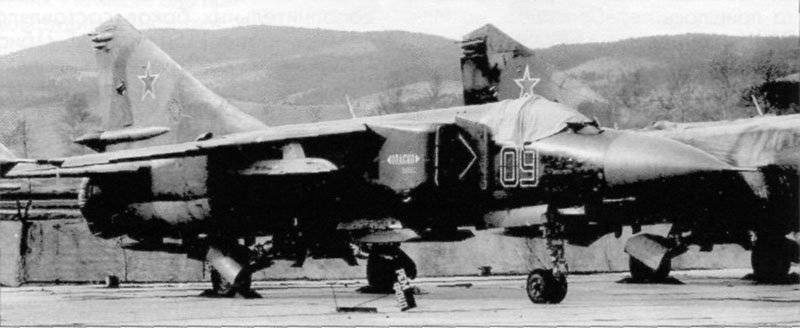
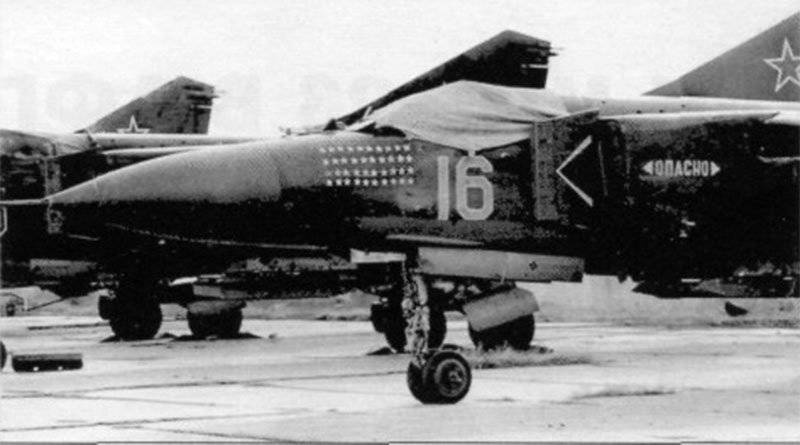
A new attempt to use the MiG-23 followed in the fall of 1983, when fighters of the 735th regiment were given the task of working out the possibility of using the MiG-23 from Afghan airfields. More recently, this regiment was also in the air defense system. With the change of subordination to the Air Force, the TurkMO regiment received the MiG-1980M in 23, and from May 17, 1981 was transferred from fighter aircraft to the IBA and became a fighter-bomber, one of the few in the IBA that flew the “twenty-third” . At first, they limited themselves to flights of flights to Bagram and vice versa, laying the route and mastering the peculiarities of take-off and landing at high-altitude airfields. Departures were made without weapons, and stay in Bagram was limited to refueling before the return flight. However, these events also failed: after several “shuttle” flights on one of the aircraft, when starting up in Bagram, the engine failed, which crashed at a rather “uncomfortable” airfield, “hackneyed” tanks and tractors, where sand and stones in parking lots and taxiways were commonplace. To replace the new engine and the repair group had to be transferred to the IL-76. A week later, the MiG-23M returned to the Union, and the whole thing ended.
The decision to replace the MiG-21 fighter aircraft of the 40 Army with more modern aircraft was made by the summer of 1984. By this time, the entire air group was reequipped with new types of aircraft, and only fighter aircraft continued to work on the "twenty-first". With the increase in the scale of hostilities, their shortcomings became more and more obvious: a small combat load, insufficient range and duration of flight, poor aiming and, especially, navigation equipment, because of which even access to the remote target was problematic. All this not only significantly affected combat effectiveness, but also narrowed the range of possible tasks. At the same time, the MiG-23, getting rid of "childhood diseases", became one of the main machines of front-line aviation and replaced the "twenty-first" in most of the fighter units. Sufficient operating experience was gained, methods of combat use were developed, and the arrival of new fighters to replace them was natural.
The most advanced modification of the MiG-23ML was sent to Afghanistan, devoid of the shortcomings of the early models and earned a reputation as a “real fighter” not only due to its high thrust-to-weight ratio, ease of piloting, increased maneuverability and range, but also sufficient reliability and serviceability (by this time began to be considered among the most important). Especially valuable on high-altitude airfields and in the summer heat were good take-off and landing qualities of the MiG-23ML (its run-up under normal conditions was one and a half times shorter than that of the MiG-21bis), which ensured a reserve for fuel and combat load. The range of the MiG-23ML even without additional tanks was 1450 km against 1150 km from the MiG-21bis. Stabilization of the aircraft in flight was provided by the SAU-23AM automatic control system, which maintained the position of the aircraft in roll, pitch and heading, however, piloting during flights along the route remained the task of the pilot, who had a map and flight-control instruments. The use of RSBN greatly simplified navigation (however, by the time the first 23s appeared on Afghan airfields, this radio navigation system was only planned for deployment).
When used as a fighter, the MiG-23ML had significantly better combat effectiveness, having a modern sighting equipment complex. The aiming system made it possible to intercept air targets in various settings: under adverse weather conditions, in radio-contrast clouds, and also against the ground, on head-on courses and in the rear hemisphere. Unlike the “twenty-first,” whose arsenal consisted of only melee missiles, the MiG-23 had a more powerful set of missiles and could conduct air combat using medium-range missiles P-23 and P-24 with reach of 35-50 km. The new rocket armament made it possible to hit enemy planes flying above or diminishing relative to their fighter to 8000-10000 m, being highly effective even when attacking highly maneuverable air targets (launching the P-24 and P-60 missiles ensured the defeat of the enemy plane when maneuvers with an overload to "eight"). Since in the Afghan situation, an air enemy had to be dealt with only occasionally (such cases were reduced to episodic clashes with fighters of neighboring Iran and Pakistan, which we will talk about in more detail), first of all, aircraft strike capabilities were required for use on ground targets. In the role of the MiG-23 shock machine, it could carry up to 2000 kg bombs in caliber from 50 to 500 kg on the underwing and ventral holders, including up to four five-hundred and incendiary tanks or 16 bombs of 100-kilo caliber on beams of multi-lock holders. The armament set was supplemented with blocks of unguided missiles UB-16-57 and UB-32А, equipped with the entire 96 with C-5 missiles, or up to four large-caliber C-24 missiles. However, the MiG-23 sighting system was nevertheless designed primarily for solving “destructive” tasks, and had limited capabilities when working on ground targets: for example, when bombing, firing a cannon and launching missiles, the sight was used as a conventional collimator reticle, and the calculated dive angle and range were set manually.
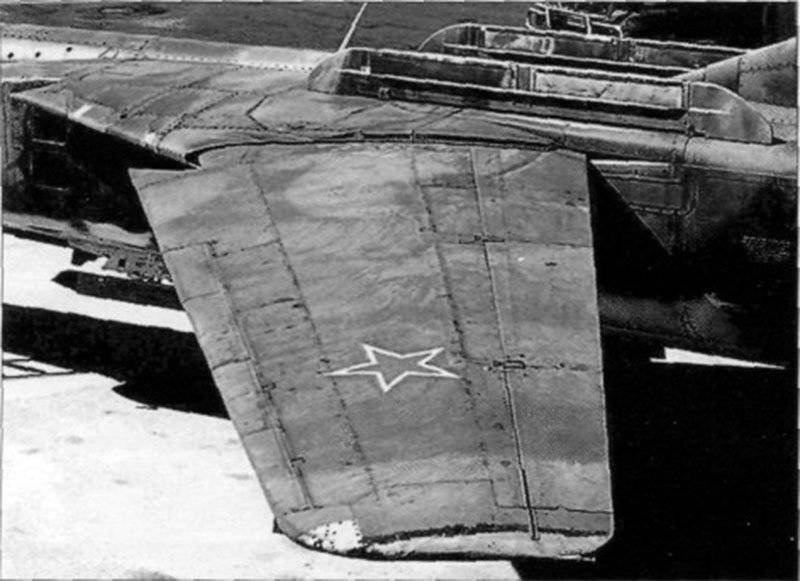
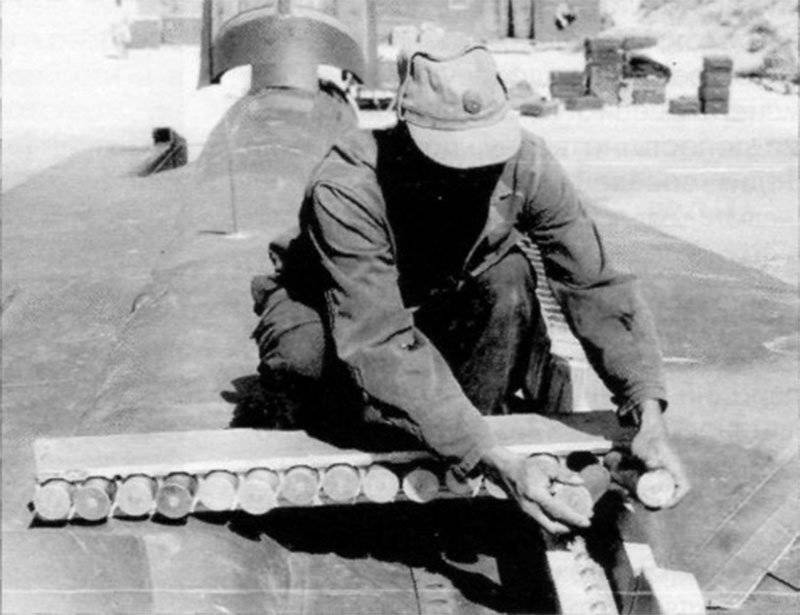
Most of the fighters heading for the 40 Army in the air force underwent a revision along the lines of MLD with improvements in equipment and maneuverability. Sometimes both modifications were in the same squadron, which created problems for the pilots due to some differences in the cabin equipment.
Before being sent to the DRA MiG-23 (including the “Sparky”), the equipment was equipped with the VP-50-60 interference suppression units to protect against anti-aircraft missiles — four cartridges with cartridges of LO-43 or RFID traps on the center section. Such a cartridge with a caliber of 51 mm of almost a kilogram weight was much more effective than the former small PPI-50 traps used on the Su-26 and MiG-17. Each kilogram trap with a thermite composition yielded for 21 — 5 seconds a bright fireball with a temperature of up to 9 ° C, to which the thermal self-guided missiles were redirected. The cartridges were shot in series with a predetermined interval with a press of the combat button when attacking, as well as during takeoff and landing, when the aircraft was limited in speed and maneuver, and the passage of dangerous areas, especially at low altitudes. In addition to the centering cassettes on 2200 cartridges (hence the name - 60 "interference" with automatic setting APP-60), the traps were placed in a modified pylon under the PTB-50 tank. In its front and rear elongated fairings there were also 800 cartridges whose guides were mounted with the solution to the side of the vertical. Their control was brought to the “Reset PTB” button, the first time it was pressed, the tank went off, and a second press turned on the shooting of traps. Charging of the pylon cartridges was enough for 16 — 3 volley, then they entered automatic shooting and they began to leave the train in two seconds with an interval of 4 seconds. The disadvantage of the design was the inconvenient equipment of a very heavy pylon, which was under the belly of the aircraft. At first, it was ill-conceived and blocking the launch, which was not allowed when the chassis was released, which once led to shooting right through a hanging tank (fortunately empty), which the traps were flashed through. A full charge of the system on trial was enough for 0,2 attacks.
It also carried out a revision of the engine start system, which increased the reliability of work in the heat, and the adjustment of gas temperature limits behind the turbine to increase thrust.
The direction of the MiG-23 in the 40 Army Air Force was organized according to the pattern developed in fighter aviation: in order not to bare the home airfield, the regiment took over the baton for the year commanded two squadrons, which were not less than 1 and 2- classes (although it happened here in different ways - sometimes the organization came about with a purely military surprise and it happened that even the first year students who had just graduated from school went to war). One squadron remained at home and the young pilots listed in it continued to engage in combat training, gaining experience. For obvious reasons, at this time, the regiment, from which only a third of the squadron remained at the base, was removed from combat duty. The regiment that had departed for Afghanistan, however, was brought to a regular three-squadron configuration. The third squadron, also on the MiG-23, which supplemented the regiment to the regular staff was drawn from another part, which was sometimes many kilometers away, and was part of another unit. At the site, she was seconded to the main body, and after a one-year term she was replaced by a squadron from the same place. Such an organization did not pursue the adopted regimental structure, but was determined by the conditions of stationing: there were only three airfields in Afghanistan that were suitable for basing combat aircraft — Bagram, Shindand, and Kandahar (and the busy Kabul international airport was used only periodically), and in each of they were housed by one squadron of fighters.
The deployment of fighter aircraft at air bases provided not only an even distribution of forces to control the surrounding territory in the east, west and south of the country, but also cover for DRA from threatened areas: Bagram fighters provided air defense from Pakistan, a squadron in Kandahar from the south of the country, and a squadron in Shindand, along the Iranian border. For this purpose, in accordance with the Order of the Ministry of Defense of 1982, and the joint Order of the Commanders of the Air Defense Forces and the Air Force of 1983, combat duty was organized at Afghan airfields. At each of the three airfields, a fighter link was allocated for these purposes. Typically, two aircraft from the duty link carried weapons to intercept air targets, and the other two - to attack ground objects in case of an emergency departure for a call to support their troops.
If necessary, maneuver between the airfields was carried out, and in the right place during the operation the necessary number of vehicles was concentrated. The main base of the fighter aircraft was the well-equipped and well-equipped Bagram air base, closest to the headquarters of the Air Force and the leadership of the 40 Army in Kabul, from where guidance and coordination were carried out. In Bagram there was a regimental control and a thermal power station, where fighters from Shindand and Kandahar were driven to carry out routine maintenance and repairs. The organization of the work required the coherence of not only the intelligence and operational departments of the headquarters; no less troublesome was getting the combat readiness of the engineering and aviation service. IAS specialists had to show remarkable organizational skills not only in preparing and repairing machines, but also in terms of planning, because the 100- and 200-hours of fifty-five fighters that were required by the regulations were needed for a very high intensity of combat work after a couple months of service in a new place! Fortunately, the MiG-23ML favorably differed in ease of maintenance and other operational qualities, including the reliability of the units and systems achieved in this modification (the previous performance of the “twenty-third” sinned in this part and we must pay tribute to the command, which was not in a hurry with quite foreseeable difficulties of operation in a tense combat situation).
In mid-July, the MiG-1984LD from the 23 of the Air Force CALD from Taldy-Kurgan, commanded by Colonel E. Pereder, was transferred to Afghanistan 905. The regiment, the first in the southern districts received in 1979-1980. machines of this modification, had sufficient experience in their operation. Two of his squadrons stationed in Bagram and Shindand. The third, Kandahar squadron, comprised 14 MiG-23ML and MLD, as well as 2 MiG-23UB, drawn from 982 th ip Air Force ZakVO from Georgian Vaziani. She was commanded by the regiment commander, lieutenant colonel Baranov (after six months he was replaced by Major Ananyev). Unlike the national team from Taldy-Kurgan, where pilots were selected at the training camp more experimentally, for the Wazian subdivision they did not choose class pilots from the whole regiment. Hurrying with the dispatch, a full-time 2 squadron, in which among the 18 pilots there were many lieutenants and senior lieutenants of the second or third year of service, was sent to perform international duty. However, it was they who had to be the first to go to the war, a month ahead of their neighbors.
MiG-23 had to fight in the most difficult period of the war. The scale and number of operations in 1984 reached a maximum, and the volumes and voltage of aviation operations were close to them. It was only for the summer period that 22 military operations were planned - almost twice as many as in the previous year, but the situation demanded that the 40 army should also carry out 19 not previously envisaged major operational activities. The most ambitious of them were the regular Panjsherskaya and unscheduled Herat operations conducted with the involvement of unprecedented forces and assets. The year was the peak in the number of dead soldiers and officers, and the number of combat losses in the Air Force jumped one and a half times, reaching a dozen combat aircraft and more than forty helicopters. However, there was not a single MiG-23 among them, despite their participation in large and complex operations.
The planned relocation itself had to take place at the final stage of the famous “Big Pandzhshera”, in the midst of which it was inappropriate to carry out the replacement and relocate newbies, and there was no time. In addition, Bagram, overcrowded by the attracted forces, did not have free parking, the airplanes that had already been working from it had to be placed along taxiways and on hastily equipped metal floorings. As a result, the flight of the 905-iap had to be postponed for a month and a half, and the redeployment of the 982-th regiment to Kandahar was detained (previously only a fighter link was based on it). Only a month later, from mid-July, the squadron from Vaziani found itself in a new place. The MiG-23 of the 982-iap became the first fighters of this type in the 40-th Air Force. The next day the group arrived from Taldy-Kurgan.
1984 also saw major operations near Kabul — a summer one, from 23 to 28 in August, and autumn, from 23 in September to 10 in October, in October also hosted military operations to destroy the Dushmanskaya base in Urgun, and in December - in Lurkohe in the province Farah. Over the winter, 10 planned and 3 unscheduled operations were performed. The load on aviation was also corresponding: for 1984, the consumption of bombs doubled, reaching 71000 units against 35000 in the previous year, the number of loaded missiles increased more than 2,5 times and amounted to 925000 (1983 spent them in 381000).
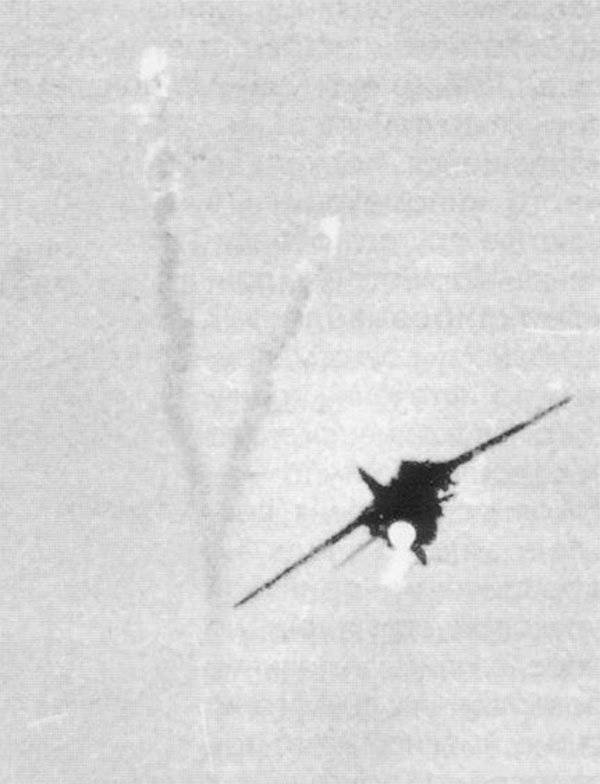
The main types of munitions used on the MiG-23 were bombs, predominantly high-explosive 250 and 500 kg of various types and models, as well as high-explosive fragmentation OFAB-250-270 with fragmentation "shirt", effective against most targets. The dignity of the OFAB was their versatility, which allowed them to hit both the buildings that served as the enemy’s shelter, the strongholds and the protected firing points, for which the power of the high-explosive impact was more than enough, and the living force dislodged by the shower of deadly debris. OFAB was more often used for aircraft equipment, and their share among other means of destruction was the largest. Thick-walled FAB-250TS and FAB-500TS were used for rock shelters, fortifications and caves. Such bombs had a solid steel cast case, which provided the breaking of barriers and stone vaults with a gap in the depth of the shelter. For strikes against manpower in shelters, caves and duels and buildings in gang-based sites and villages, volumetric-detonating ODAB-500P with liquid explosive, especially effective in mountain gorge, were used, where the fire cloud of their explosion kept the impact power and temperature, burning out a large amount.
One-time bomb cassettes of half-ton and quarter-ton caliber - RBC-250, RBC-250-275 and RBC-500, which started with small fragmentation bombs, as well as SHOAB-0,5, gave a special effect. Small fragmentation bombs were made of brittle steel cast iron, with a break of easily broken into a mass of slaughter fragments. Half-toned RBC-500 SHOAB-0,5 with small spherical bombs, containing ready-made striking elements from hundreds of steel balls, looked the most “meaningful”. The SHOAB cassettes contained 560-570 fragmentation bombs that fit literally into the cassette case (which is why the number was called with a certain tolerance - how much would fit). When discarding, the contents of the cassette were thrown out with an expelling charge, covering up to several hectares of space (the action of RBC was described as “self-scattering”).
The area affected by RBC depended on the height and speed of the flight, which were set when choosing tactics according to a specific task and the nature of the target, including its protection with anti-aircraft weapons. The tactics of use and recommendations for bombing RBC were compiled in such a way that a reset from a certain height and at a given speed would give the optimal cover with overlapping areas of damage to individual gaps, exterminating everything cleaned up there. For an idea of the effectiveness of such a strike, one can cite a figure - the rupture of a polukilogrammovaya ball bombs SHOB-0,5 alone ensured the deadly defeat of manpower in the 60 area of m.2 multiplied according to their number in the cassette. So, when struck from 1000 altitude at 1100 speed of km / h, RBC-500 covered with deadly “balls” a continuous destruction zone of the order of 400-600 m. the adversary.
The nature of the defeat RBC deprived the enemy of one of its main advantages - the ability to quickly disperse and hide, using thickets of "green zones" and stony mountainous terrain with a mass of natural shelters. The RBC strike covered a vast area with a deadly hail of fire and steel, which made them especially in demand when striking area targets — dushman camps, bases and villages, which served as a refuge for the enemy. RBC also had good effectiveness in suppressing enemy air defenses: conventional bombs “knocked out” anti-aircraft gunners only with a direct hit, while the contents of the bomb cassettes covered the location of the anti-aircraft positions with an areal strike, leaving no real space there and ensuring defeat of a specific target.
The use of ammunition, however, was not always targeted and was often determined by the types at hand. The lack of the most suitable ammunition in the warehouse could in no way serve as a basis for a break in combat work. They used heat-resistant bombs designed for supersonic bombing, and assault low-altitude bombs, from which they removed the braking system, as well as lighting, smoke, and even photographic ones with a powerful pyrotechnic charge, which acted as incendiary if their delivery was delayed. The required delay in triggering when bombing from low altitudes and diving is for safety when dumping and avoiding its own fragments was established with the help of fuses. Great importance was also attached to the ease of use, preparation and integration of local features. For this reason, cannon and suspended cannon containers were practically not used as intended, the fire from which was in the mountains, on rocky terrain and in the “green zone” with a lot of shelters was not effective (although charging of the GSH-23L was always complete and many pilots did not deny themselves in pleasure to slash at the target at the exit from the attack of hundreds of projectiles of projectiles ").
Reluctantly used "hundred", too weak against most goals; it was believed that their use was a waste of resource and fuel and they had to be suspended only in the absence of more suitable calibers. Due to the low efficiency of the “hundredth” high-explosive action, they had already retired by that time, losing to more powerful calibers, but the fragmentation AO-50-100 and the high-explosive fragmentation OFAB-100 and OFAB-100-120, which fully satisfied the solution of a number of tasks, remained on the supply . At the same time, OFAB-100 and OFAB-100-120 were used for mining from the air, for which bombs were equipped with fuses with a slowdown of up to several days. Such bombs could be supplemented with the main blow, after which explosions continued to thunder for a long time, which prevented souls from disassembling the rubble and looking for workarounds in the gorges. The success of the mining depended on the number of bombs that “planted” trails and mountain passes, for which the MiG-23MLD was hung on multi-castle MBD2-67U holders, each of which carried four bombs with a total of up to 16 bombs on the suspension. The fighter could carry up to four MBDs (version with 16 OFAB-100), but more often two MBDs were hung under the wing and a couple more bombs on the fuselage nodes; in this case, the fighter carried ten OFAB-100. However, when using MBD with a large number of ammunition, the air resistance significantly increased - such a suspension was the most "ruffled" in this regard, almost doubling the drag. As a result, fuel consumption increased, the fighter significantly lost in flight qualities and maneuverability, it managed worse, which is why only experienced pilots were entrusted with such tasks.
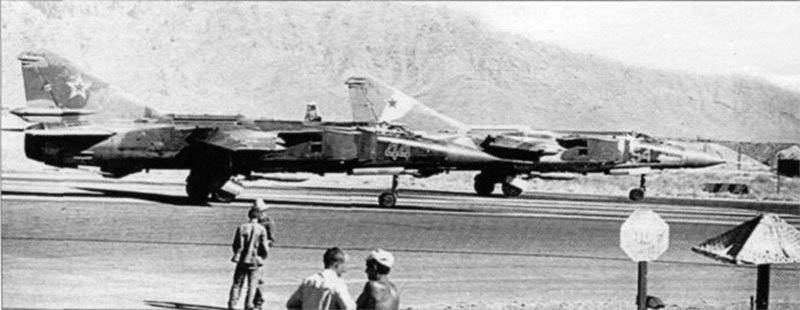
An important role was also played by the impression made upon the adversary upon impact — as was customary in the East, efficiency usually depended directly on the effect produced. For this reason, sometimes the application of a demonstrative BSHU was sufficient, forcing the Mujahideen to retreat. The blows of the impressive five-hundred-squares broke apart any duval and could even crush a well-protected firing point. Powerful explosions caused landslides from the slopes and a shower of breakaway sharp fragments of stones. The RBC hit gave a well-visible from the air affected area - an extensive dusty ellipse tightly seeded with breaks of fragmentation “stuffing”.
The option of bomb loading was always determined by the balance between the desired efficiency (for which I wanted to take a bomb load more), distance to the target (a large load reduced the range) and the equally important influence of the load and weight of the aircraft on the takeoff and landing qualities. The latter was often the determining factor: the congestion of the aircraft in the difficult conditions of the Afghan airfields threatened with a prolonged takeoff and slow climb, which was unsafe because of the growing danger of fire from Dushman shooters. Prompt departure upward immediately after separation became the rule, being far more preferable than “scraping” the height above the green-field infested by the enemy. The threat was by no means exaggerated - aircraft repeatedly received holes right at airfields. Each 1% increase in take-off mass of the MiG-23 was accompanied by an increase in run-up length by 2,5%, respectively, at maximum load the run-up increased by 45%. A takeoff with a maximum bomb load, even under normal conditions, gave an increase in the takeoff run about one and a half times.
Its share, and very hefty, in the deterioration of the take-off and landing characteristics contributed to the high-altitude location of airfields and hot less dense air. When taking off from Bagram with its excess in 1950 m, the takeoff run increased by 60% against normal conditions.
Each degree of air temperature increase versus the usual one by 1% increased the run-up. The temperature and rarefaction of air also had a similar effect on the rate of climb when reaching a safe altitude. Taken together, unfavorable factors made it possible to save in the only possible way - trying to withstand the weight of the aircraft acceptable and choosing the combat load within rational limits.
Normal loading was a pair of aerial bombs, less often - four (two five hundred and two quarters, but sometimes four FAB-500s each, if the target was nearby and you could save on refueling). The combat load was also determined by the time of year - in the summer heat, the thrusters and the rarefied air of the highlands “kept” the plane to take off worse in the summer heat. Another, from time to time, the reason for the restrictions was difficulties with the supply of ammunition, forcing them to reduce the number on the plane (after all, every bomb and projectile needed to be delivered from the Union, sending thousands of kilometers by convoys and transport aircraft). The justifying circumstance in the suspension of an entire pair of bombs was that the effectiveness of the discharge in one run, which became the rule for security reasons over the target concealed by anti-aircraft fire, was determined more by the accuracy of this strike than by loading the aircraft. There were specific instructions on this score, ordering to unload one of the suspensions in one volley, without risking to get back on fire in repeated visits, and overly gambling violators threatened with reprimand. A pair of bombs, exactly laid in the target, coped with the task no worse than the greater number of them.
Most of the combat missions according to 1985 data were strikes against previously planned targets - camps, bases, warehouses and fortresses, which fighters fulfilled 20% of the total. The fighter jets produced 8% of call departures for the destruction of newly discovered objects - firing points, ambushes, shelters and caravans, the majority of which were helicopter pilots who knew the terrain better and were adapted for action on point targets. The reconnaissance of targets by the forces of fighter aviation occupied 6% of its total volume and was carried out by fighters primarily in their own interests, for a detailed study of the area of work to be performed, to clarify the conditions and to reconnoiter before the attack. For it, the Sparks of the MiG-XNUMHUB, coupled with the combat MiG-23MLD, were often recruited, in the cabins of which the most experienced pilots took the place. Using the benefits of teamwork in the crew, the observer in the front cabin of the Sparky fixed the situation below and guided the orientation, outlining the paths of the approach and the construction of the attack on the map. Often, the MiG-XNUMHUB took place in combat formations, serving to target and monitor the results. They were also used by a management team that occupied a high-altitude echelon and watched the BSHU course, accompanying the flight with instructions from the pilots. Such supervision, understandably, was not very much welcomed by the pilots, who ironically called the plane soaring in height with the command of “AWACS” 23.
The task of target designation with aviation support was solved with the help of aircraft navigators or in cooperation with helicopter pilots who designated the object by launching a NAR or dropping a bomb, the rupture of which gave the direction and distance to the target. Visible even from a height, a dusty mushroom of rupture or a plume of smoke from the smoke bombs of the leader aircraft served as a guideline at which the strike force was aiming. Of particular importance is the clear interaction with the gunner with the support of its parts - fighters could not make out small-sized targets from ordinary flight echelons. The task was complicated by monotonous terrain and there was a high probability of simply not finding the enemy, and even the risk to work out according to one’s own. Despite the requirement for infantry with air support, they should identify themselves with smoke bombs and colored signal smoke, and pilots should not strike closer to 2500 from the front of their troops when bombing, such cases have occurred.
Bombing has always been targeted. When the clouds covered the target, the flight was canceled. The group went into a predetermined area by a column of pairs or links, stretched so as not to embarrass each other, and in each pair the slave was slightly behind the lead, ensuring freedom of maneuver. A reset was almost always performed from a dive, usually from the angle 45 — 60 ° or up to the steep, as far as the pilot's skill allowed. In the dive performance of the glide, the plane was more precisely aimed at the target. Over time, when the extreme lower flight altitudes were raised under the reach conditions of the Dushman air defense, the dive angle was limited to 45 °, otherwise the aircraft accelerated too quickly and there was no time to aim - within seconds after entering the pilot had to take the handle.
Since the MiG-23LD equipment was minimally adapted for work on ground targets, many pilots did not use the ASP-17ML sight automatics, whose computer solved the aiming task in the mountains and gave too many blunders. The pilot performed the reset mainly in the manual mode, relying on his own skills and experience. The input to the dive was performed when the target was under the LDPE, and the dumping was delayed to a given height, according to individual signs and “instinct.”
The share of the NAR in the composition of the combat load remained small. The C-5 type missiles in the UB-16-57 and UB-32 and C-8 units in the B-8М units, as well as the large-caliber C-24, on fighters went out of use. Mostly this was due to the need to use them from short distances and heights, to 1200-1500 m, which was risky with the strengthening of air defense; Another reason was the difficulty of piloting the MiG-23 with blocks, which after launch remained on the suspension and felt like air brakes, making the aircraft in the most critical moment on the withdrawal inert in control and maneuver. The fighter carrying the “sieve” of the blocks with a delay went out of the dive, sagged and slowly gained height, slowing down the anti-zenith maneuver — features that the use of bombs did not bring, dropping them immediately freed the car and was felt by the pilot as a signal to a conclusion.
In addition, the equipment of the units required the preparation and charging of hundreds of missiles, while the foreground of the growing volumes of combat work was the speed and convenience of preparation and the natural choice was made in favor of reliable and effective means of “fast preparation” - bombs. Bombs favorably differed by the simplicity of the equipment of the aircraft: it was enough to throw the bomb on the holder, close its lock and twist the fuse (not counting the fact that you had to deal with half a ton of pig ...). Their rampart continued to grow: in 1985, the number of used bombs increased by a quarter and reached 890000, and the NAR decreased by 11%, making 826000 units. The fighter missions, due to the absence of the enemy, were limited to escorting strike groups during sorties to border areas and on combat duty in the country's air defense system. Airplanes with well-functioning and reliably working radar sights stood out at the duty links, the rest continued to take off for day-to-day strike. Because of this “division of labor,” the most “deserved” fighters, carrying marks of 400-500 sorties on board, just did not differ in the complete absence of comments on the REO and radar. To work on ground targets, the Sap-Fir-23MLA-2 radar sight was not required, the station was not even tested in fighter training, other minor defects and failures were viewed through fingers (“if only the engine was spinning, the wheels were spinning, but the bombs got off” ). The same was true of navigation - for the most part, navigation was carried out visually, using a map and landmarks. At the same time, the most "standard" fighters remained at the duty link, where work was an order of magnitude less - replacing failed machines, departing from the reserve for escorting, reconnaissance and other everyday tasks to maintain the required level of forces. In the shock groups 3-4, or even more flights on the plane and the pilot per shift were the norm. After the exhausting “roundabout” of the BSHU, the service in the duty unit looked like a rest, and the pilots were sent to it for a short respite after everyday stress of combat work.
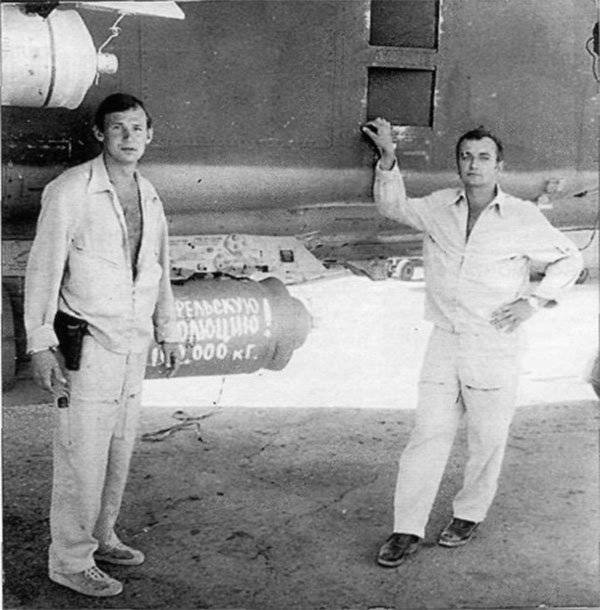
The uneven distribution of the combat load, which also depended on the differing amount of combat work at different aerodromes, different balance of the resource on the squadron machines, the activity of their use depended on, and even the first aircraft on the list were assigned to the tasks more often. significant differences in the air raid of individual fighters. For 1985, with an average 84 flight and 112 sorties per MiG-23, the maximum values on one of the fighters in Bagram were 398 hours and 423 departures - more than on any Su-17 and Su-25! The average pressure on the pilot was 1,15 departure per shift versus 1,07 in attack aircraft and 0,86 in fighter bombers, second only to scouts who had a load of 1,17 and helicopters with a one-and-a-half-large number of sorties 1,6 departing into a shift.
After a year in Afghanistan, at the end of May 2 982 squadron in Kandahar replaced 1985 squadron of the same regiment under the command of Lieutenant Colonel V.I. Novikov. The newcomers accounted for the first combat losses of the MiG-1. Less than a month after arrival, 23 June, the MiG-21MLD by Lieutenant Bagamed Yusupovich Bagamedov, who had flown in a pair to reinforce the attack of the Shindand squadron under Kalat, did not return from the mission, in 23 km north-east of Kandahar. The pilot, who was going to close, was killed, and the circumstances remained unclear - his loss was noticed only when the second group got off the attack and lay down on the opposite course. In the battle formation, a young and not sufficiently experienced pilot, who had only a dozen combat sorties on his account, was put on the rear. In all likelihood, having come to the attack last, he came under increased anti-aircraft fire. On that extremely unfortunate day, the loss of the MiG and its pilot was not limited to the search: the search helicopter, which flew to the rescue, on the approach to the crash site of the fighter came under fire from the ASC and was also shot down. The pilot and navigator Mi-120 managed to leave the car with parachutes, but the flight engineer was killed in the helicopter.
8 August crashed flight commander captain Vladimir Pivovarov. When running BSHU in 90 km north-west of Kandahar, his plane carried two UB-32 and two UB-16-57. No one in the squadron with such a suspension in the mountains had flown, and the Komesk Leonid Ananiev unequivocally assessed it, with low efficiency, simply dangerous. Apparently, the pilot from the same squadron also let down a small combat experience (this was his 24 flight to Afghanistan). After the volley of missiles, Pivovarov’s plane, which had already been released from a dive at 1500 m, lost speed and, parachuting, hit the mountainside flat. The pilot could not eject. A possible reason could be a hit from the ground - being close to the Mi-8, dropped to search for the pilot, he immediately fell under anti-aircraft fire.
Kandahar squadron losses were further pursued: on October 18, as the pair took off, the fighters collided in the air. The pilot of one of them had to leave the car in 8 km from the airfield, the plane of the other kept control, turned around and performed landing. The next incident occurred on February 8 1986 in Shindand when landing the aircraft of Lieutenant Colonel Evsyukov. After the destruction of the wheel, the pilot did not keep his MiG-23MLD on the run, the plane descended from the runway after 100 and flew into the building. The car was seriously damaged, damaging the console, chassis and fuselage, vomited even the attachment points of the screw turn transducers. This plane was rebuilt, although the repair was pursuing the usual “paper” purpose of carrying out what happened in the report as a fixable breakage, and not an accident, which caused a lot of trouble for the pilot himself and for the commanders. For combat missions fighter no longer flew.
Both squadrons of the 905-iap until the last days worked without losses (the only aircraft for the whole year received a bullet hole, already seen on the ground after returning, and another “Sparky” crushed during a rough landing). However, already at the end of his stay, at the very departure home, a fatal mistake was made. At the end of July, the fighters of the Shindand group were to leave Afghanistan and return to the base in Taldy-Kurgan. For long-haul flights, three tanks of PTB-800 were hung on the planes. The closing pair due to the failure of the turbine starter on the lead aircraft was delayed with departure. Repair took time and had to take off the next evening, 23 July 1985, rushing to overtake the departed regiment, instead of the usual take-off in a secure scheme with climb in the protected area, overloaded PTB fighters took off in a straight line. Not having sufficient height, the slave plane went straight to the dushmansky machine gun. MiG-23MLD Chief of Staff of the squadron of Major Viktor Chegodaev, who had more than 200 sorties, was shot down by DShK. The pilot managed to eject, but died because of the prevailing parachute canopy. They said that the interrupted by a bullet strap of the tethered parachute system prevented him from escaping.
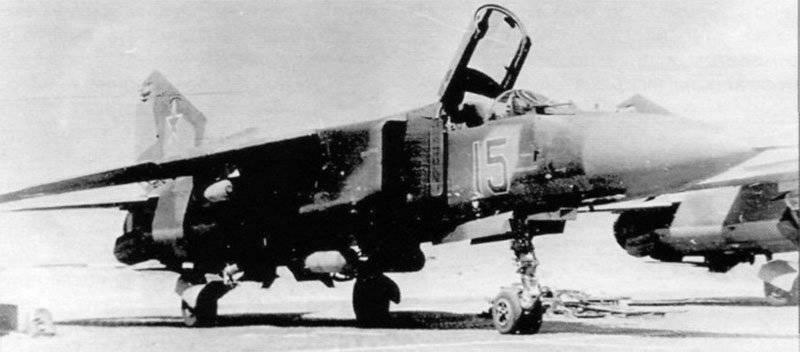
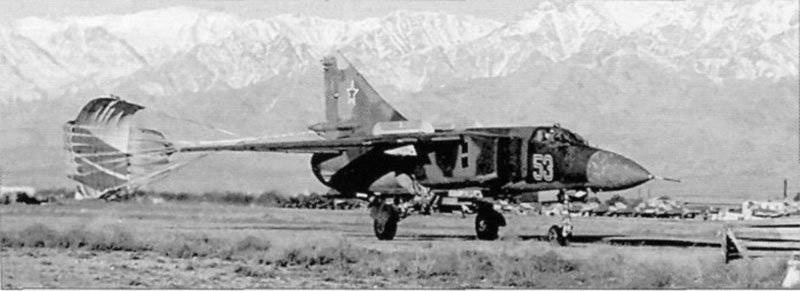
1985 brought the greatest losses to the MiG-23: fighters lost 5 vehicles, the pilot's 4 died. From July, the Bagram and Shindand areas of responsibility of the Taldy-Kurgan regiment received the 655-iap from the Baltic Pärnu. Already under the new year, December 27, the senior navigator of the 655-st iap Lieutenant Colonel Anatoly Levchenko died. One of the most experienced regiment pilots had by this time already an 20-year flight experience. He was involved in the execution of “international duty” as early as the beginning of the 1970s, participating in the Soviet fighter air group in combat operations in Egypt. Over the previous six months, Levchenko managed to perform 188 sorties, and on that day he flew twice on a mission. Towards the evening at the head of the link, he went to strike a target in the mountains on the approaches to Salangu. Ensuring the work of the group, he had to crush the enemy’s anti-aircraft weapons with a bomb strike. The place of work was only 27 km from Bagram. On the 14-th minute of the flight immediately after dropping the bombs, the Levchenko fighter received a DShK hit. Slave observed flares that passed through the cockpit and the fuselage, after which the MiG-23MLD did not come out of a dive and crashed into the rocks. Lieutenant Colonel A. Levchenko, by a government decree from 26 in May, 1986 was posthumously awarded the title Hero of the Soviet Union, becoming the only fighter for the entire Afghan war to be awarded this award. The case itself became the basis of replicated stories about ramming their anti-aircraft position. It seemed to propagandists that the death of the pilot was not enough, and even his death instructions on the radio to his comrades and descriptions of dushman's casualties in the place of the ram appeared in the press. In reality, Major Alexei Shcherbak, flying in a pair with Levchenko, reported only about leading and loss of control (the fighter, starting with a height of 1500 m, went into an almost vertical dive), and the documents of the Air Force headquarters TurkVO said: “The pilot was killed in the cockpit the aircraft during the shelling of DShK ". Wreckage of the aircraft in the snowy mountains could not be found.
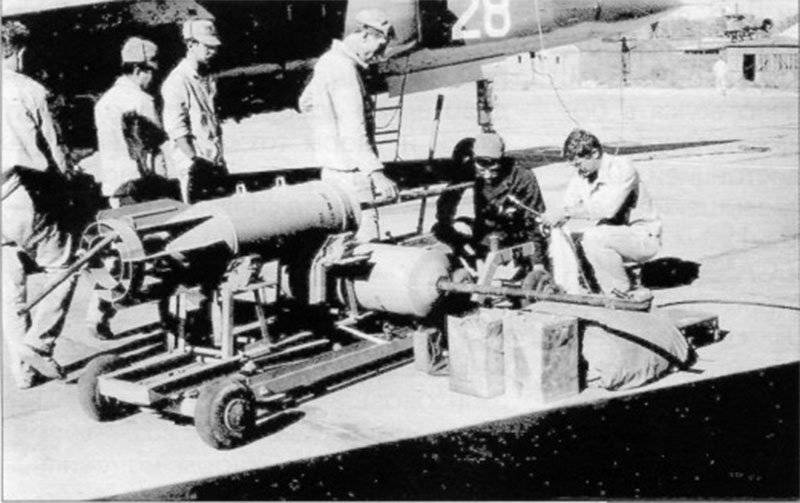
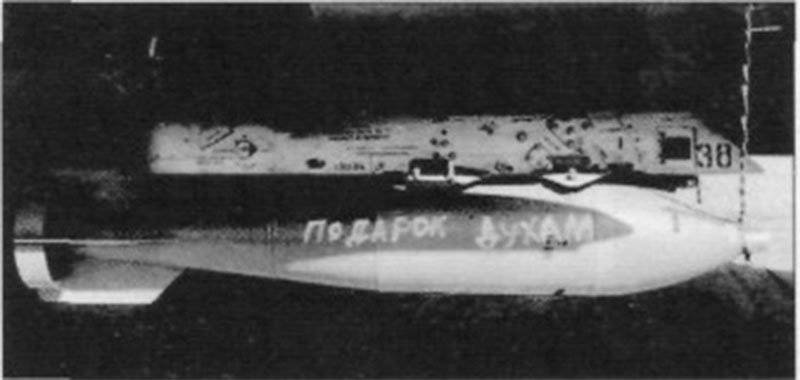
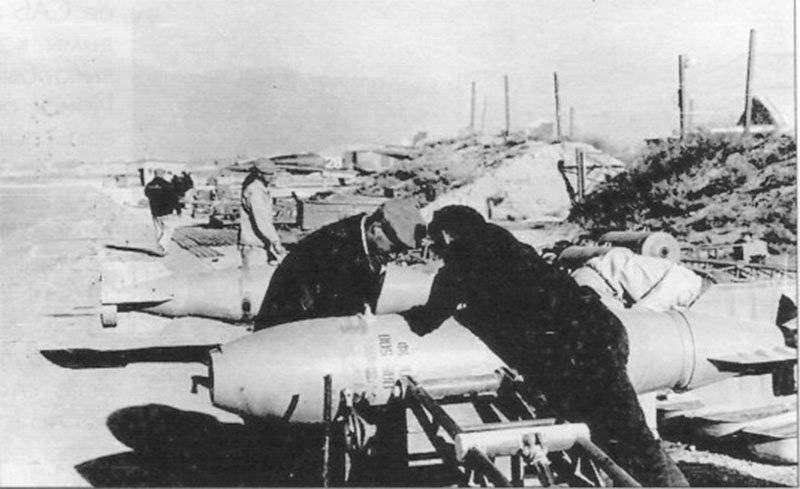
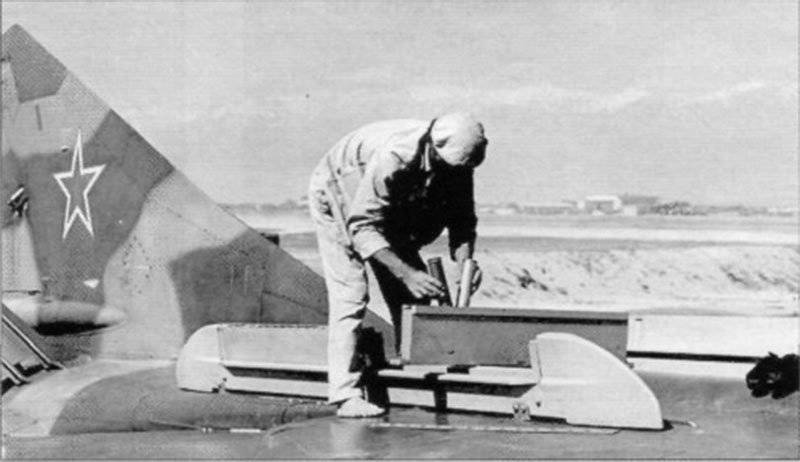
The threatening growth of losses forced to take measures to improve tactics and organization of departures. The situation was significantly complicated by the appearance of enemy MANPADS with which the dushman air defense system was quickly saturated. Compact and easy to handle, Strela and Red I (during this period, MANPADS of various types got into Afghanistan by devious ways) did not require equipped positions, could easily be secretly delivered to any area, could be used from cars and roofs of city buildings, and appeared in ambush even at the borders of the airfields. With the advent of 1986 in the fall of the Stingers, massively supplied by Americans, air defense reach rose to 3500. The situation was reflected in the growth dynamics of losses from MANPADS: after some facts of their use in 1984, resulting in the loss of 5 aircraft and helicopters, in 1985. 7 aircraft were shot down, and in 1986, MANPADS took the first place in efficiency, hitting the 23 machine. In this case, the defeat of a rocket, which was independently aimed at the target and possessed a powerful warhead, almost always led to the disabling of the most important systems even without a direct hit - there was a close break with a powerful high-explosive impact and a stream of fragments, which almost always resulted in the loss of the aircraft. The massive use of MANPADS from 1986, the confrontation gave the character of this "struggle for air."
The obligatory included taking off and landing in a “shortened pattern” with a climb in the afterburner in a spiral, in which the aircraft remained within the patrolled area around the airfield until it reached a safe flight level. Obligatory at the same time, as when landing, was shooting infrared traps, without which the flight was not allowed. During the landing approach, the reduction “with a large gradient of height loss” was practiced (“landing along a gradient”). According to the standard scheme, the group went to the airfield at an altitude of 3500 m with a course, the reverse landing and performed the dissolution of the distance to build a maneuver. After the release of the flaps, landing gear and brake flaps, the fighter fell into a steep downward turn, keeping the throttle on the small gas so that after half a turn of the downward spiral it turned out to be strictly in the runway. The bank at the same time reached 90 °, and in the cabin even had to turn off the continuously flickering alarm, warning about the inadmissibility of maneuver on the verge of "controlled fall". The middle drive of the aircraft was still at an altitude of 500 m and already on leveling after a rapid decrease, the pilot increased speed to par, pulling up the engine. A missed approach in case of a miss was considered a serious offense, which substituted the plane for possible fire when climbing, a lap and a new landing.
Landing the squadron according to this scheme was carried out extremely short in time and took a few minutes, not giving the possible enemy time to aim. 3-4, who came up to the top level after a time, mined the mines to the parking lot. The impressive technique, however, was quite complex and required sophisticated piloting and machine ownership techniques. Its downside inevitably became an increase in accidents - for pilots who were exhausted by several sorties, it was not easy to comply with all requirements, fitting into the tight framework of a maneuver performed at a good pace under the "pressure" from behind, and even experienced pilots had a blunder. Accidents and breakdowns during landings accounted for up to half of all casualties, being comparable in number to combat losses. The complexity of the landing did not allow to use for this ACS-23, although the automated mode of the usual approach to the touch and was already mastered in the ranks.
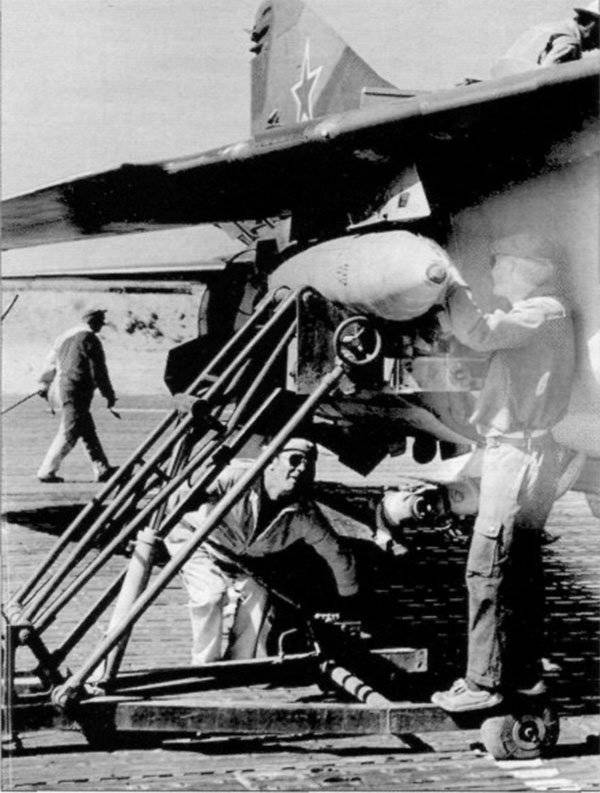
Mastering the scheme was included in the compulsory course, which began to pass pilots heading to the DRA. It included three stages: training at their own airfields with a volume of 35-40 h, then training in mountain-desert conditions on the basis of Mary-1, where they mastered navigation, orientation and combat use, especially with a steep dive, and commissioning at the air force airfields 40 st army. The program was not always fully implemented (sometimes the deadlines were not allowed, sometimes the class was allowed to shorten the course), but the transfer of the “living experience” by the group being replaced was the most significant, the pilots of which took the newcomers along standard routes, pointing out basic guidelines and goals and sharing subtleties and accumulated secrets of combat work, which were not read in the manuals. The first flight was carried out on a “Spark” under the supervision of an experienced “old-timer”, then in a pair and a mix of mixed units and squadrons from both groups, and the skills were usually transferred from a pilot to a pilot of equal level (senior pilot, flight commander or comsesque trained a novice in that same posts). In common parlance, the course of development was defined briefly and clearly: “To drive by the hand and to stick your nose at the target.” We didn’t talk about the use of training ammunition, as was practiced at home, “we don’t have training bombs, but we don’t scatter war bombs, immediately get used to working on real goals.”
When organizing sorties, mixed air groups were used more often, in which fighters, attack aircraft and helicopters complemented each other. As part of the shock groups themselves, if necessary, additional exploration and target designation groups were identified, using characteristic landmarks to find the target and SAB or DAB denoting it, whose torches and smoke from medium heights were visible from 10-15 km. The search was usually carried out in combat order with a distance from the distance of 600-800 m and the output of the slave 100-150 m. The burning time of the SAB and DAB (6-9 min) was enough to be approached and detected by the main group. The attack was preceded by an attack by a pair or an air defense suppression link that used ammunition that gave an area cover, the NAR and RBC. They processed the target individually or in pairs, coming from different directions.
BSHU strike group was made using a variety of tactics - "turntable" ("chamomile") from the circle, calls from which alternated from different directions, giving a continuous impact on the target, "comb", when the aircraft from the marching column one by one consistently turned to the object of attack and strikes also came down from different azimuths, a “tulip” and a “bell” with more complex spatial maneuvers, ensuring, with regard to the terrain and nature of the target, the same task — a massive impact on Linda, do not give raise their heads, disorganized possible return fire and to disperse the attention of anti-aircraft gunners. The strikes were delivered with minimal “gaps” in seconds, according to the safety conditions from the debris of the previous aircraft. Repeated attacks were always prescribed from a different direction, building a maneuver at 2000-2500 m. In mixed groups, high-speed fighters usually struck the first blow, after which attack aircraft were taken for the purpose, achieving it with methodical attacks, rocket and cannon fire.
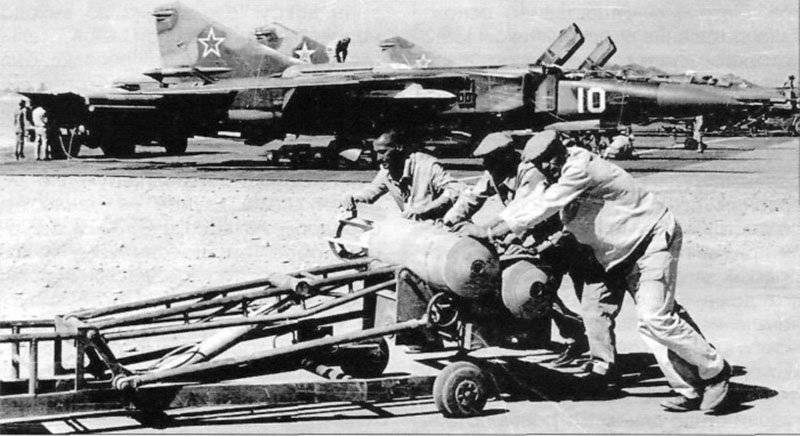
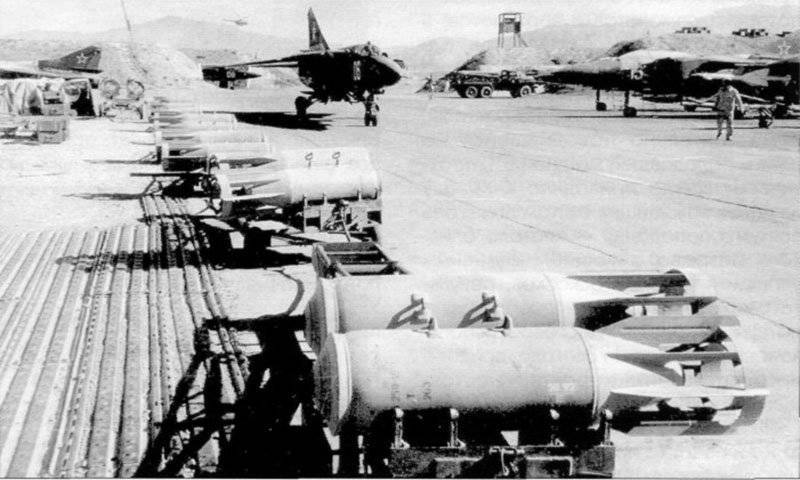
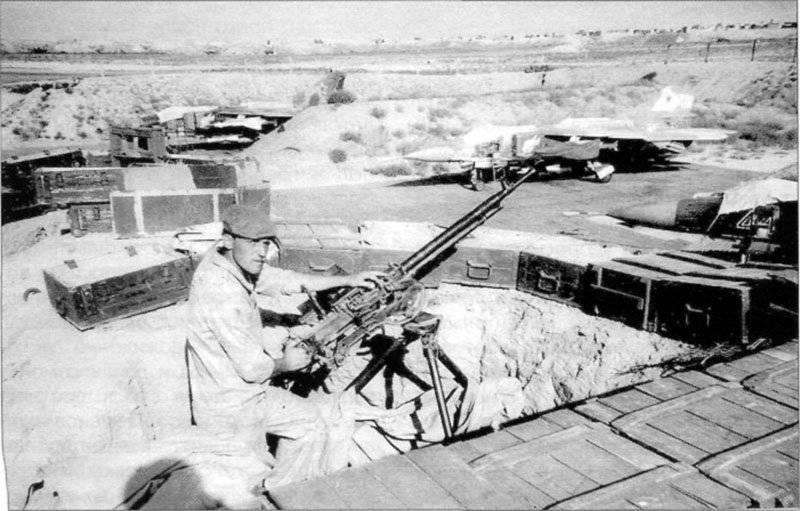
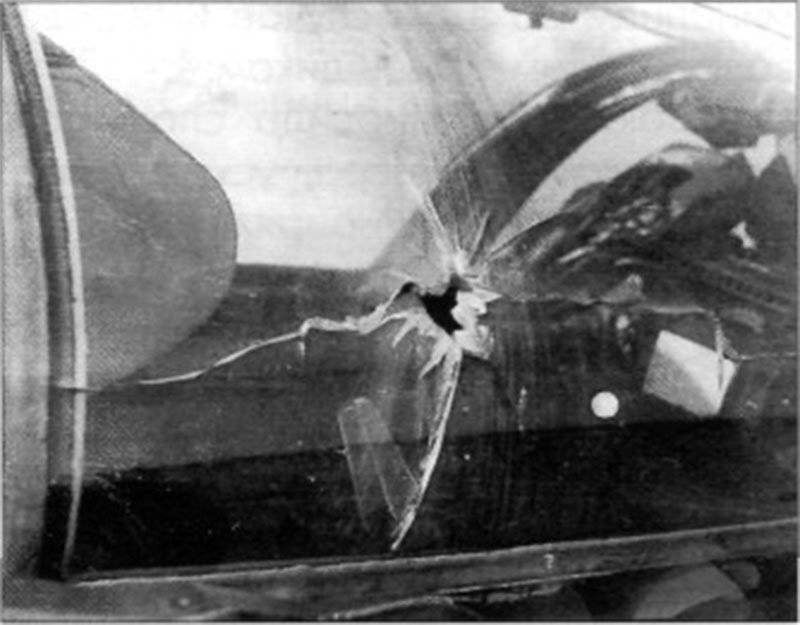
The increasing appearance of MANPADS and ingenuity in their use have begun to “survive” aircraft to a height. In 1986, the rule did not come down when attacking to less than 3500 m, which became the boundary of the exit from the “Stingers” dive. Later, as a precaution, the lower limit was raised by another thousand meters, setting to 4500 m. The height of the input also rose, and the maneuver had to start from heights of the order of 8500 — 9000 m. Naturally, from that height, the search for targets and the construction of an impact strike became problematic that affected the effectiveness of the bombing. Tactical techniques when working from high altitudes have lost their relevance, yielding to the only one method - dive bombing with a consistent approach of the group's aircraft to the target, which was carried out at the shortest possible intervals for the impact density. The order of battle was usually a column of steam. If the object was sized, such as a base, a concentration area, or a stronghold of dushmans (usually played by an enemy village), the blow was struck by alternately bombarding pairs: the first one attacked the near edge of the target, then the next one aimed at the gaps and rising dust clouds, displacing the places of incidence bombs a little further and so on, seeking to cover the entire object. As accuracy went down with a rise to height, the issue of efficiency sharpened. The only way out was the increasing massing of the raids, which compensated for the shortcomings by increasing the number of sorties and the tonnage of dropped bombs. For destruction of typical targets, the following forces were identified: for the fortress — eight MiG-23 with two FAB-500 bombs on each and two airplanes with two C-24 missiles on each, and a separate house — link with four B-8 blocks on each (320 missiles) and a link with C-24, and even to the firing point in the gorge - six MIG-23 with four B-8 or eight with C-24. In order to hit the bridge from the given heights, it was considered necessary to send at least six MiG-23 with a five-hundred-pair suspension on each. A noticeable disadvantage of the instruction was the fact that with the established combat use heights, part of his recommendations were simply impracticable - from the specified heights the blocks and missiles were no longer applicable. The prohibitions appointed by the higher headquarters and, by themselves, the proposed installations, as usual, sometimes contradicted each other.
When the 1986 was replaced in August, the MiG-23 from the 190-iap under the command of Colonel Leonid Fursy arrived in Bagram and Shindande, arriving from Kanatovo near Kirovograd. A squadron of 976-iap from the Belarusian Schuchin flew to Kandahar for reinforcement.
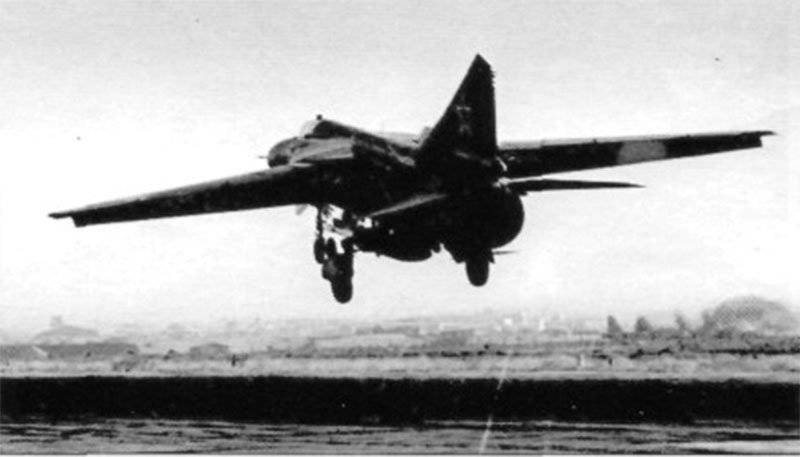
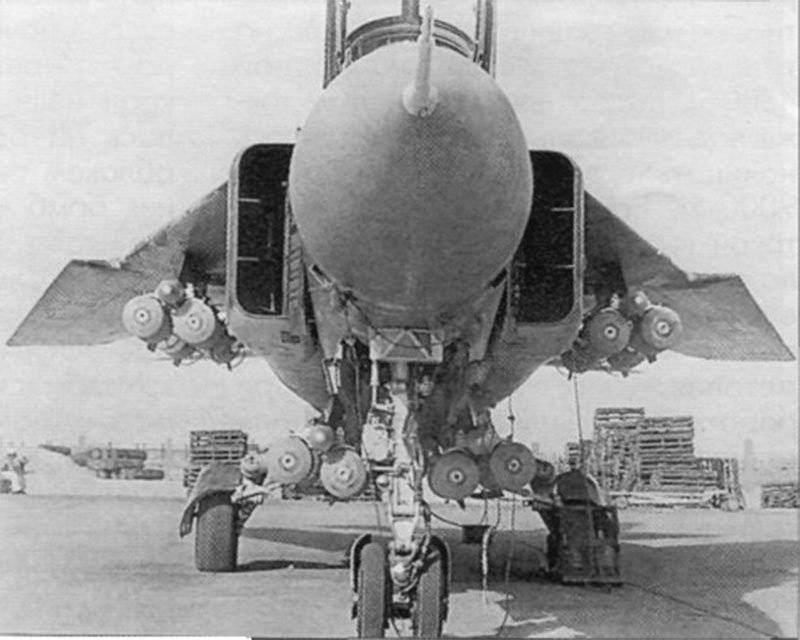
The precautions taken gave results: for the entire 1986, not a single MiG-23 was lost from enemy fire. The mass use of IR traps, whose consumption reached impressive numbers, also played a role: in 1985 - 2555 thousand, in 1986 - 4745 thousand and in 1987 - 6825 thousand. As a result, for the entire period of 1984— 1987 there was not a single case of defeat MiG-23 MANPADS when shooting traps, and only a single case of damage by fragments of a close rupture of the aircraft, which ended the stock of infrared cartridges. Nevertheless, it was not always possible to “fight by the rules”. Restrictions were often violated by pilots who sought to lay bombs more accurately, reprimanded them just as regularly, and the contradiction between safety and efficiency remained, especially with air support, when it was necessary to knock out pinpoints.
In the first half of 1987, the 40 Army Air Force fighters took part in nine major operations: near Kandahar in February-March, near Ghazni and in the central provinces in March, near Kabul and Surubi in April, to the east of Kabul in May, Greenland Argandab and others. The combat work was without loss, but in one of the training flights there was a unique case. The MiG-23MLD lantern, Major Vyacheslav Rubel, who was practicing aerodrome, was pierced by a “bullet” bullet that split the filter of his safety helmet. Miraculously escaped the death of the pilot landed the plane, and his ZS-5 remained a reminder of this case and was transferred to other substitutes.
Its share was made by the complexity of the landing maneuver, aggravated by fatigue and tension. 23 February 1987 was defeated by the MiG-23MLD captain Sergei Medinsky. The pilot himself described what happened: “Flying to the goal - without any excesses. At the time of the withdrawal greatly failed and fell behind Tolik Bolshakov. I caught up with 3 for a minute without being caught up. I noticed that there was little fuel left - 700 l. Sent in a bit when to the km 100 airfield, and the rest - 400 l. Requested from abroad. At first they were not allowed, but I was joking in the Su-25 group. Speed accelerated decent. For the first time in his life, he "skosl". The plane began to ride, I was confused, I could not even immediately find the release button for the braking parachute. When the front desk broke, I released a parachute. The plane cannot be restored ... ”It is significant that the accident itself did not speak about the poor training of the young pilot - he continued to fly and was soon marked along with lead Anatoly Bolshakov as“ the best fighting couple ”.
However, in a matter of days, the regiment was not up to the proceedings - in a month and a little two fighters were lost. March 10 at BSHU in 50 km from Surubi on the plane of the squadron chief of staff Vyacheslav Golubev after a volley from UB-32 there was a surge and engine failure. It was not possible to launch it, the pilot ejected, was wounded upon landing on the rocks and was soon picked up by the MSS. While trying to pick up the SARPP flight recorder at the crash site, the search team came across an ambush and a military intelligence officer was killed there.
On April 16, a group of 190 fighter regiments flew out at Khost for the bombardment of the fortified Jawar area. The capture of the dushman's base exactly one year ago was announced by Kabul as a big victory, however, as soon as the government forces left the empty camp, the Mujahideen returned to it. After a few weeks, the base resumed its activities, supporting the surrounding Dushman formations and a transit point for delivery weapons. The Afghan army in the local province of Nangarhar was already in an extremely constrained position, being blocked and cut off from supplies (it was carried out mostly by air). In these places, the central government, in fact, was kept only by Khost himself, and the border was completely not controlled. The arrival of weapons and the actions of the enemy remained unpunished, and only air raids served them as a flashback. When performing BSHU, the top eight Colonel Leonid Fursa declined in search of a target and at the height of 2000 m got hit in the engine. The engine caught fire, the accompanying followers observed a plume of fire and soot. At first, the pilot still hoped to reach the airfield. He managed to translate the wing in the position of the minimum sweep, adding to him the bearing qualities, but then the engine began to give interruptions. Another minute the pilot continued to pull into the desert, far away from the enemy positions, and the plane ready to explode left it. Over the place of his landing, guarding the commander, his pilots joined the circle - commander of the regiment lieutenant colonel A. Ospishchev, major V. Nedbalsky and captain V. Tur. They covered the regiment commander until the arrival of the search group helicopters. When Fursa landed, he was injured, hit the hospital, and he no longer flew in Afghanistan. He was shot down during his 388-m sortie.
Regarding the circumstances of the incident there was a version of Pakistani fighters, as the perpetrators of the incident. It was alleged that it was F-16 that unexpectedly attacked a group of MiGs and shot down an aircraft leading to missiles from a long distance. However, none of the members of the group observed the Pakistanis that time. The same situation appeared in the official report, where it was said about the defeat of the aircraft by the DShK fire at a dangerously low altitude. Nevertheless, the meeting with Pakistani fighters did not take long to wait, having happened only a couple of weeks later.
After 1987's commander Iap was shot down in 190 in April, Lieutenant Colonel Alexander Pochitalkin, Chief of Staff, took command of the regiment, with all the workload in the leadership group distinguished itself by a record attack among fighters - 563 was flying sorties to his account! It was Pochitalkin who led the group on the day when the first clash of Soviet pilots with Pakistani fighters occurred. By this time, two squadrons of the Pakistani Air Force received an F-16 and, having mastered modern fighters, began to take active operations on the border. The danger that had arisen made the cover of the shock groups stronger.
When working in border areas, a pair or a MiG-23LD link with PTB-800 was necessarily sent to the escort. The fighters carried two P-24Р and two P-60 missiles, combining weapons for long-range and close maneuverable combat. In addition to the missiles, it was mandatory to complete the full ammunition to the gun. The cover was carried out by the method of airborne obstruction with duty in areas on the most likely directions of attack by the enemy. The search for an airborne enemy was conducted independently with the help of a heat finder and a radar sight, since from observation radar air bases, the work areas were usually shaded by mountains. Such an autonomous technique was called “AWACS himself”. Observation and sighting system was used in the "GOR" mode, which provided target detection during patrolling at a low altitude above the vertices in 25-27 km; as the height of the burglary increased, targets below were detected in 18-20 km and captured from 14-16 km.
Nevertheless, the Pakistani pilots, using real and imaginary cases of trespassing, sought to realize the tactical advantages of “playing in their field” - a good knowledge of the terrain, proximity to their airfields, radar stations and observation posts, and, if necessary, support by interceptors on duty. After a series of successful interceptions, the Pakistanis felt superior and began to fly into the Afghan side without hesitation. It is difficult to say whether such cases were navigational errors, consequences of impunity, the excitement of hunting, challenge or open support of the Mujahideen. But since the spring of 1987, they have begun to multiply. Lieutenant-General Abdul Kadyr, commander of the Air Force and Air Defense of the Democratic Republic of Afghanistan, reported that there were 1987 cases of Pakistani air border violations recorded by 30, which was confirmed by an unexploded “Sidedinder” missile found on the field in Tani County on April. During the spring months at the Khosta, the Pakistanis shot down several airplanes and helicopters of the government aviation of the DRA, for the most part, transport workers with cargo for the besieged Khost. But also for the pilots of the “shakhins” and “griffins”, as the Pakistani aviation wings were called, the zalety in the Afghan airspace threatened with the most unpleasant surprises.
In the open, Soviet pilots met with Pakistani 29 on April 1987. While executing regimental sorties at dushman bases in the Javary area, the MiG unit was to bombard high-explosive fragmentation sites through mountain passes. Several gorges connected the central provinces of Jawaru, which, like the region itself, were periodically subjected to bomb strikes. So on the eve of the 40 Army aviation again processed mountain passes to cover them with broken stone. The four of the MiG-23LDs, which had left Bagram, were to “seal” the most probable routes of movement of the Mujahideen, blocking the Dushman messages. Each car carried 16 bombs on multi-lock holders. To block Dushman's messages, bombs were being prepared for mining and were equipped with fuses set for temporary operation from several hours to six days. The explosions thundering here and there made the terrain dangerous for the enemy, shackling the enemy.
Knowing about the possible counteraction of the Dushman air defense, the departure was planned with the use of a cover, which was provided by a pair of fighters, Major Nedbalsky. The strike was to be accompanied by an anti-yen maneuver. The flight profile assumed an exit to the Javary region at an altitude of 8000 m, a shift to the intended square, a reduction to 4000 m and bombing from a tailing, unlike the usual practice dive. At the same time, flying bombs would cover a large area, while the aircraft remained out of range of anti-aircraft fire. At the exit from the attack followed an anti-aircraft maneuver: a jump to 7000 m with an energetic turn on 90-100 °.
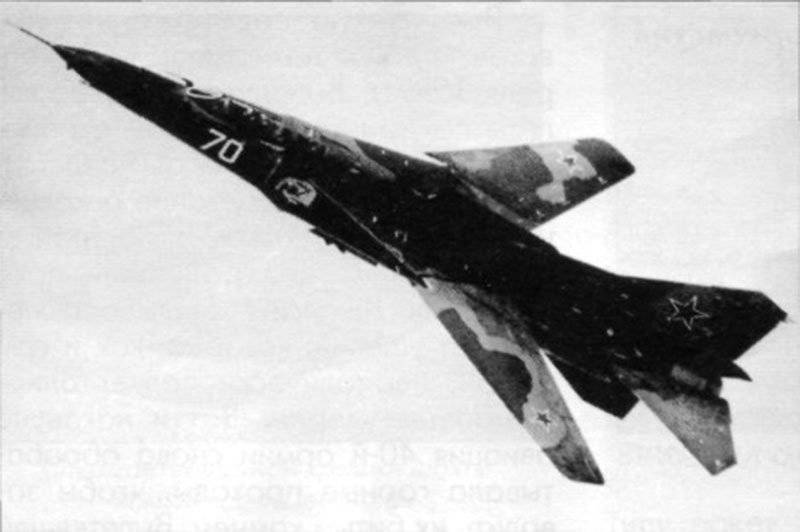
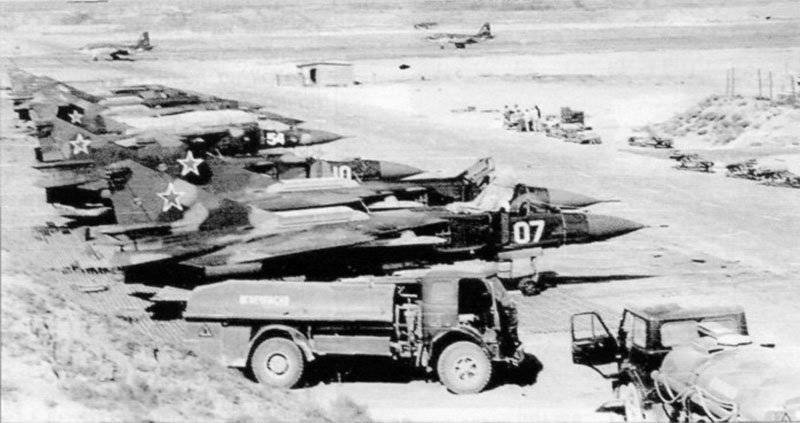
To avoid interception, we decided to go along the arc away from the Pakistani border. Despite the almost overcast clouds, which made it difficult to follow the route accurately, the experienced commander confidently led his team to the designated area, where he managed to notice the village of Tani, south of Khost, in the window and orient before the impact. Three slaves followed him closely, and on command, they immediately closed the line, leaving for the combat course. At this time, Birch began to squeak in my headphones - there was an air enemy somewhere nearby. But now it was not up to him. MiGs dived down, slipped over a close ridge, and pulled together into a steep climb. With the press of the combat button, the lead aircraft made a large, lingering shudder, as if it hit a washboard — bombs were falling. Volley got rid of bombs and the rest of the aircraft. Unloaded, the fighters began to climb steeply. By the same tight group, the MiGs performed a combat reversal, “bending the hook” to the left and up. Having jumped out on the maneuver on 6500, the group leader turned around and looked around - was there anyone behind. Down below, he saw a group of flaming torches catching up. Immediately from the blazing plane, a dark dot rushed to the side - the catapult worked, and the parachute dome opened in the sky. Deciding that this is one of his own, Pochitalkin turned around and asked for the followers. All quickly reported that they were intact. Pochitalkin reported to the base that he was seeing an unknown burning aircraft, and the commander of the regiment’s intelligence, Major A. Osipenko, who was coming to the rear, confirmed the report. Then the commander turned in the direction of the torch, and then all the pilots of the group saw how a second alien — gray-blue F-2000 — jumps out of the thick clouds in 16 m. He makes a turn around the burning partner and, having turned on an afterburner that looks like a lit match from the side, leaves with the kit in the direction of Pakistan.
On the way back, the broadcast exploded with questions about what happened, who was shot down and how. After landing, Pochitalkin reported that his link was attacked by a pair of Pakistani F-16 and one of them fell under Khost. His words were confirmed a few days later by Major General Yarmokhammad of the Afghan State Security. According to his agents, the F-16 pilot managed to escape, he landed in the area controlled by the Mujahideen and was taken to Pakistan that night. In search of the fallen F-16, a couple of MiGs were sent, with PTB pendants and missiles in case of a new skirmish, and those few days went to the border. It was not easy to find the wreckage in a continuous series of rocks and gorges; besides, the informants, Afghans, reported that the wreckage of the aircraft shortly after the incident was also taken to Pakistan.
When analyzing the incident, the question arose: how was the F-16 shot down, because the MiG-23 missiles were not carried. The official commission considered three versions. The first, recognized as the most probable: F-16 came across a fan of bombs that flew off after dropping along a ballistic trajectory. The F-16 course laid out on the maps showed that they were probably disguised, going from the Miramshakh airfield and hoping to intercept MiGs at the most convenient moment when they bombed and would go out of a dive.
The unexpected maneuver of Soviet fighters with a sharp decline before the attack and cabrirovan deceived the Pakistani pilots: F-16 jumped forward and fell under the dropping bombs, and the weave struck even without an explosion (blocking the fuse when installed on a mining site was finally removed only after a fall).
The second version: F-16 attempted to evade a connecting link that emerged directly in front of it, laid a sharp lapel and fell apart in the air due to exceeding the permissible overload. This, however, is unlikely. Breaking the F-16 would not be allowed by an electrical remote control system that has limitations in giving a pen (“foolproof”).
And finally, the third version: the leader could bring down his slave. Intercepting the Soviet aircraft, the Pakistanis took them to accompany the radar and led, waiting for the attack to reach the line. But the MiGs, after dumping, without stretching, performed an anti-aircraft maneuver, which also served to avoid fighter missiles. F-16 had to be turned for the leaving goal, and then the slave, who decided that they were found, could not stand the nerves. The missile launched by him in a hurry and hit the lead (such a case was heard and happened two years earlier, in April 1984, in one of the regiments, during an exercise, when, when intercepting targets, the commander of the squadron shot down his own comsesque). The cause of the nervousness of the F-16 pilots could have been the presence of the escort pair, Major V. Nedbalsky, over the venue. Being at a high altitude and not seeing even a concealed group in a tight “complexion”, she could frighten the Pakistanis with the work of their radar stations. Thus, the cover of Nedbalsky, even if having too little time to intercept the enemy, did its job.
The incident was attributed to the actions of the Afghan air defense. It was then considered to be unacceptable to talk about the participation of the Soviet air force in the fighting, and on this account they played in complete silence. If you believe the then national press and television, then the Mujahideen were opposed only by parts of the government armed forces. Regarding the incident, TASS reported: “On April 29, two F-16 Pakistan Air Force fighter-bomber invaded the airspace of Afghanistan in the region of Paktia Province. The aircraft did not respond to the warning signals of ground-based air defense systems and air forces of the DRA and continued their provocative flight. DRA air defense weapons shot down one of the air pirates over Khost district. ”
"Played up" and Pakistanis. Their official sources through clenched teeth reported the loss of one F-16 “in training flight”. As a result, there was no one to draw a star on board. Five years later, in a private conversation, one Pakistani pilot said that there was no complete clarity among them. According to him, the reason was still “a goal in his own net”, and then the blame was placed on the lead pair. The pilots, bewildered by an unexpected maneuver of MiGs, unsuccessfully performed the rebuilding, as a result the commander ready to shoot was behind the slave and he was hit.
It is curious that the Western press initially described this incident with the exact opposite, reporting that on April 29, under Khost, the F-16 fighters shot down an enemy plane. Later, the story was corrected according to the fact of loss of the Pakistani fighter and embellished by lighting the version of how Soviet MiGs attacked and fired X-ray guns with F-60 (in this form, this version got used by some authors in our “popular” literature) .
The presence of the most advanced at the time of the F-16 fighter jets affected the situation, bringing tensions to the actions of aviation in the border areas. In the meantime, the intelligence services of the General Staff showed interest in such a trophy. Machines of this type came into service with the NATO countries, and the presence of the latest fighters in Pakistan prompted a search for "closer" acquaintance with the equipment of a potential enemy, extremely valuable both for the military and for the aviation industry, interested in new technologies and studying advanced constructive discoveries. Understandably, the hopes of finding contact with a likely defector from Western European pilots were vanishingly small. Another thing is the opportunity to get a plane from Pakistan, where intelligence had its connections and mores were simpler. The possibility of intercepting F-16 and forcing it to land at one of its airfields was considered, but the chances of success in catching such an intruder were small. The operation with the agents and the traditional for the East combination of war and commerce looked more promising. According to the principle “you have a product, we have a merchant,” the F-16 was driven to Afghanistan, where he would have already met the MiG-23 on duty, under the cover of which further flight to Shindand and then to the Union was carried out. At the airport in constant readiness they kept the hangar, where they were going to hide the trophy from prying eyes, and in the summer and autumn of 1987, the operation with the participation of Soviet fighters was rehearsed three times. True, the idea did not take place - either they did not agree on a price, or the Pakistani pilot was not very attracted by the prospects of resettlement to the Soviet Union.
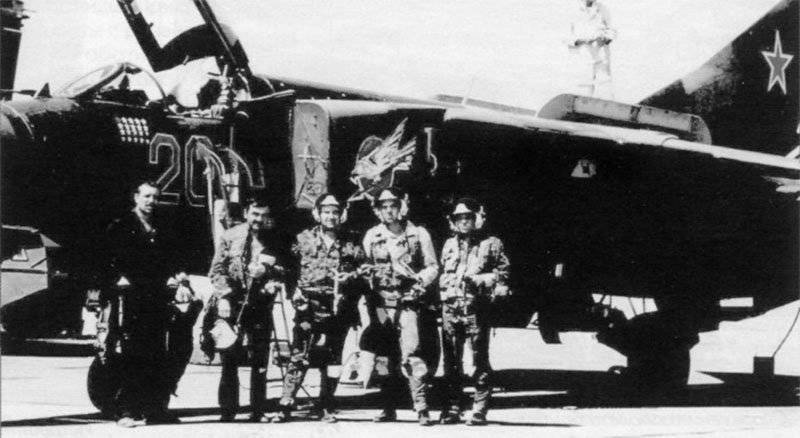
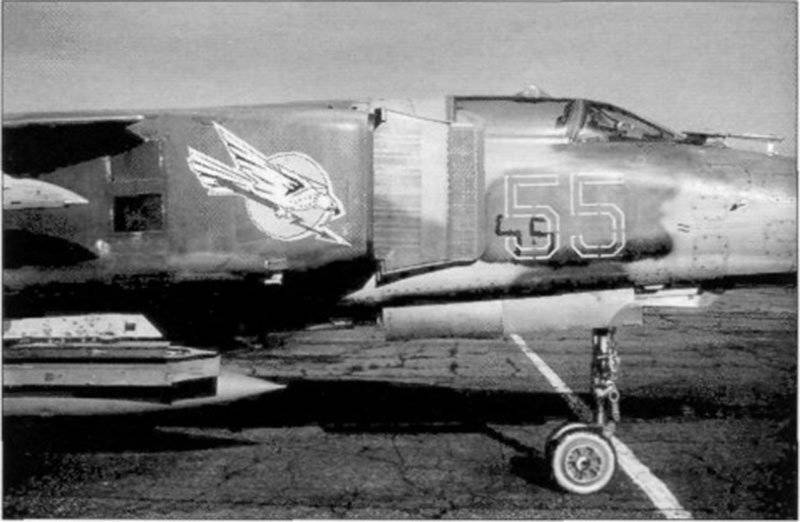
Already at the end of the trip, the 190 fighter Iap had to endure a real war for the air base in Bagram. In August, on the approaches to it began to appear Dushmansk troops who were wandering around, shelling began, and on the Day of Aviation shootouts broke out at the very sites. 23 aircraft were damaged by mines and missiles, and the pilots and technicians themselves had to fire from machine guns and ZU-23 standing on the defensive. Planes these days struck near the airfield and dropped bombs, barely having time to remove the chassis.
The shelling delayed the arrival of the shiftmen, which is why the new group of 168-iap from Starokonstantinov (the regiment was part of the same as the 190-iap, 132-th Mirgorod division) arrived in Bagram on August 14. The replaceable 190-iap stayed in the DRA for exactly 13 months, pausing for the transfer of experience to another group. In Kandahar, the Shchuchin squadron was replaced by a unit from their own 976 regiment (in the fall four of their fighters replaced the MiG-23MLD from Taldy-Kurgan). Colonel Vladimir Alekseev commanded the 168. While preparing the group, an experienced commander selected pilots of no lower than 1 and 2 classes into it, defining that "novices in the war have nothing to do."
Once in 1988, the course was set for the withdrawal of Soviet troops, the number of large-scale operations was minimized, avoiding unnecessary casualties. However, this only increased the importance of aviation, the workload of which increased significantly. The main tasks were blocking the enemy with air strikes, disrupting the activities of its bases, training centers and fortified areas, destroying headquarters, warehouses and strong points, disrupting attacks and sabotage. Systematic bombing aimed at the continued impact on the enemy and prevented the advancement of troops from border bases. Thus, the main areas for Bagram pilots were the Surubi Valley, the Kunar Gorge along the Pakistani border and the Khostinsky ledge - places that earned the nickname “Country of Dushmaniya”, for the bombing of which 8-12 fighters were allocated daily.
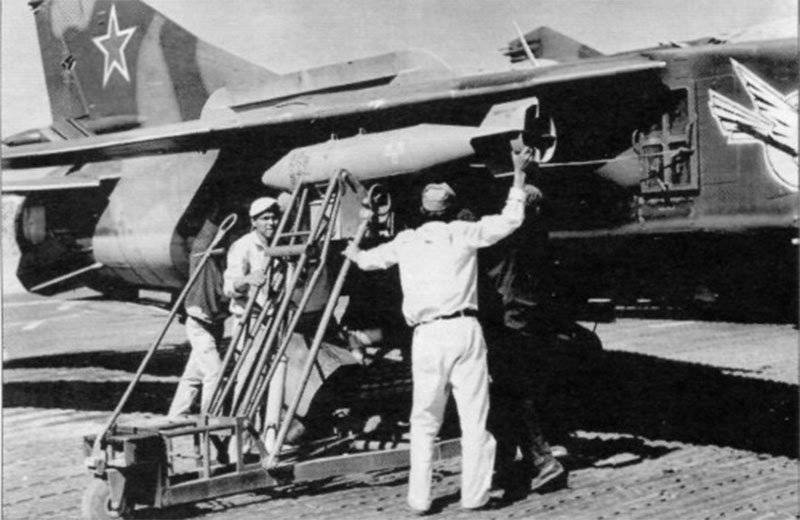
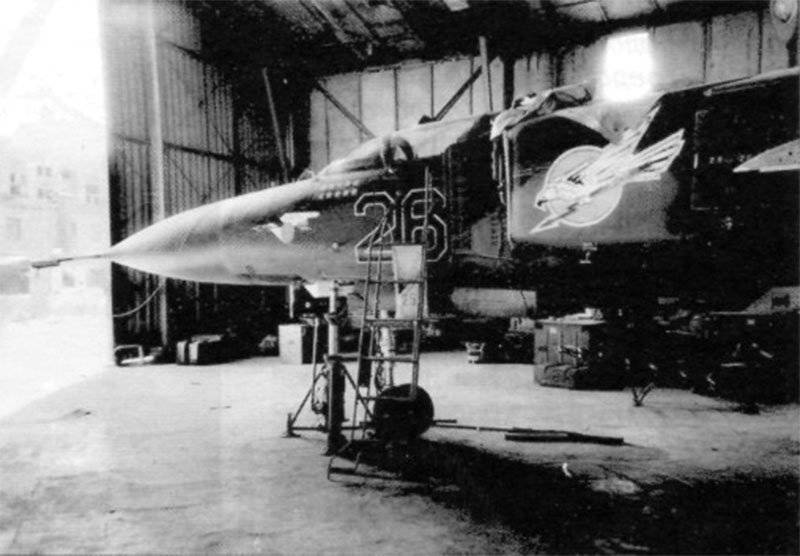
MiG-23 from Shindand regularly bombed the Rabati-Jali area in the south, from where caravans with weapons came. Here, at the lakes of Sabari and Hamun, there were dushman bases (according to visible landmarks, the place was called “two lakes”), target designation and teamwork with helicopter pilots in remote areas completely ruled by dushmans were no longer needed, pilots needed to rely on own forces in finding objects of strikes and conducting attacks.
The last large-scale operation involving large aviation forces was the “Highway”, held in November 1987 - January 1988. in order to unblock the provincial center of Khost, cut off from the center of the country. Every day, the 50-60 airplanes of the Su-17MZ squadron, the 12-16 fighters, and the 16-24 Su-25 followed them each day. For two months of the operation, the pilots flew 90-120 hours (more than a one-year standard in the Union). The aviation, which cleared the way for the infantry and paratroopers, was given special importance, and everybody who went on a mission every now and again escorted the voice of army commander Boris Gromov on the air: “Pilots, come on, they won't die for me!”
With the participation of 168 fighters from the Shindand iap in the autumn of 1987, an operation was carried out to clean the “nest” of the Herat green zone. The detachments of the Mujahideen of Turan Ismail forced out of the valley into the mountains and gorges, where they tried to cover them with bombing strikes from the air. In addition to the usual ammunition, the MiG-23 used concrete concrete BetaB-500, suspended by two per plane. Such bombs were distinguished by a narrow and long thick-walled body with a powerful cast head part made of steel, which had a high penetrating action. The objectives were underground kariz tunnels, caves and burrows in the mountains. Using BETAB-500, the Bagram fighters attacked the identified Ahmad Shah shelter twice. No other ammunition, except for facets, was practically used, and only a few times, the incendiary ZAB-500 went into action because of the delay in their delivery. A total of 1987 thous. Bombs were generated for 113 — an increase of 18% over the previous year. At the same time, the share of NAR decreased by one and a half times, to 473 thousand units, and they were used mainly by helicopters. The reason was the departure of aircraft at high altitudes, from which the use of NAR was practically impossible.
The share of MiG-23 in direct air support was minimized due to lack of efficiency and accuracy (the same reason was the displacement of aviation beyond the reach of air defense — with high-speed bombing from a height, even the dispersal of bombs in 50-60 m was considered very good). However, the joint work with the troops required the destruction of precisely point targets — firing points, shelters, and identified strongholds that were hard-hit by infantry firing means. For such an application, the MiG-23 was the least suited, yielding Su-25 and, especially, helicopters. Only when they were absent or delayed, MiGs were called in for the call strikes. About one such case, under Gardez in February 1988, was recalled by the commander of the 168 th link iap major Mikhail Oger: “Spirits were squeezed on the outskirts of the village of paratroopers, and they asked for fire. But there was no aircraft carrier with them, and we spun in three links from above. Nobody could tell us the goal, and looking out from the height of these machine-gunners is a hopeless cause. We did not even see where the battle was going on, the kishlak was big. In the end, leading Tolik Yazon ordered one to drop bombs directly into the center of the village, so that below they could decide on the breaks and give their position. However, those heads could not lift and did not even notice the breaks. It was helped by the fact that their commander had guessed to say that a bus was burning nearby, tires were being smoked, black smoke was standing like a mile. We went to a plume of smoke and worked off steam after pair along a duval where spirits nested. It seems to have fallen - the gaps lay down a wall, the landing party managed to get out of the trap. Then they met - the paratroopers said when the bombs began to lie down next to the duvalom, the land played like that underfoot, that they suffered more fear than spiritual fire. ”
When working in remote areas, the 168 th fighters began to meet again in the air with the F-16. Recovering after the loss of the aircraft in the spring accident, after a certain break, the Pakistanis returned to escorting the 40 Army aviation attack groups near the border. Having taken off for bombing south of Jalalabad, the fighters somehow met the Pakistanis face to face. A pair of F-16, apparently unsuccessfully withdrawn by the ground operator, climbed straight into the battle formation of the squadron loaded with bombs, being next to Senior Lieutenant S. Talanov. Pakistanis were seen by other pilots, but the fighters of the cover that went above could not do anything - the F-16 were directly below them, going at the same speed and the same course. The Pakistanis were in the same situation unfavorable to the attack: from the bottom they were pressed against the front of the squadron, and from above hung the “cover”. For some time, the pilots continued to go "sandwich", looking at each other, after which the Pakistanis, by reason, turned to their side. After that they even teased the pilots of the accompanying link, who reported that “there are extras in the covered group”.
Another time, in the winter of 1988, Captain V. Pastushenko from the duty link of Bagram rose at night to intercept, found the violator and chased him for three minutes, ready to shoot him down, but he never received permission. At KP, they decided not to risk attacking a “stranger” without visual contact - they could be a lost transport worker or a regular plane. The pilots themselves clearly considered the intruder a fighter: it was unlikely that another plane could so quickly leave the MiG. That winter, the flight commander V. Mavrychev rose several times to intercept the targets appearing above Baraki and Gardez. I never managed to catch them: as the target approached, they went down under the cover of the mountain range, and their marks disappeared from the screen of the sight (judging by the maneuvers and speed, they were helicopters).
Similar events happened at the Iranian border, where they repeatedly had to bomb at dushmanskim bases near Rabati-Jali and in the area of two lakes. The entire Shindand squadron was involved in the raids, which was indispensably accompanied by a cover link. The “cover” approached with some advance, putting a “fence” at the border, after which a strike group appeared and attacked the target. In group attacks, along with the MiG-23, Su-17 and Su-25 took part in the raid, because of which such a massive raid among the pilots themselves was called a "crusade". The flight had to be carried out at a fair distance from the airfield — for 350 km, but the goal justified the means: routing dushman bases and warehouses in remote locations prevented the raids being prepared and undermined the supply of opposition units, implementing tactics successfully named in the documents as “remote influence on the enemy”. Repeatedly during departures, Iranian Phantoms appeared at a distance, but they demonstrated restraint, limited to patrolling their side of the border.
In March, 1988, the flight commander, Major M. Oger, happened to intercept an unfamiliar target from the Iranian border. Covering the helicopters with the reconnaissance group at Rabati-Jali together with the captain Kondratenko, he found an unknown plane on the way and went for a rapprochement. The stranger did not respond to requests, and was already in the seizure of the radar sight. Before the pilot, the message “PR” (launch allowed) was already highlighted, announcing the readiness of the missiles for firing. Suddenly, the stranger contacted the shout “I am Bakhtar!” It turned out that it was the Afghan An-32 government airline (Bakhtar - this is its name, BBC comment), which was traveling outside the corridor, whose pilots could not remember the channel of communication. Being frightened by the unambiguous evolution of the fighter, the Afghans went through all the frequencies and, finally, were able to "introduce themselves."
Such incidents with Afghan aviators were not isolated, especially during the work of those in the border areas, when “allies” returning from the blow could be mistaken for violators. Timely recognition was also hampered by the fact that the connection between the Soviet and Afghan planes used different channels and even the responders of the “friend or foe” system could not respond. Not particularly relying on local flight management, towards unknown planes, heading from the border and not very concerned about adhering to the prescribed air corridors, they had to send their fighters closer to confident visual identification.
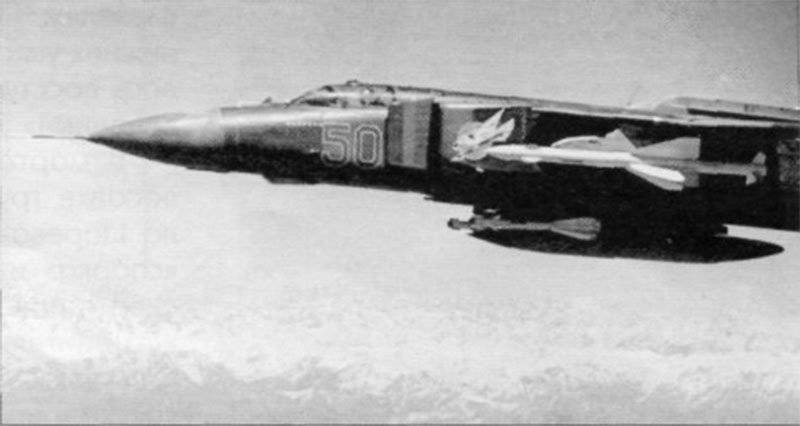
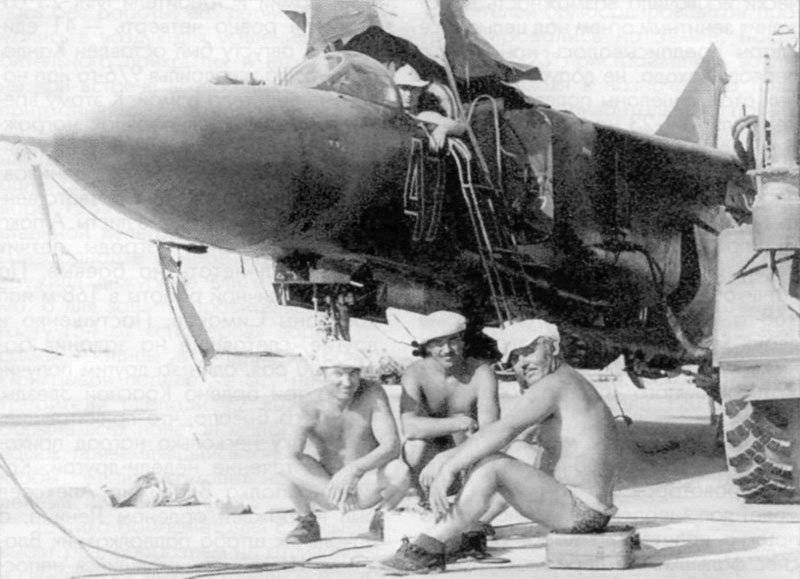
Relations with the "allies" deteriorated in order when the speedy departure of the Soviet troops became apparent and the government military began to feel a clear sense of insecurity about the future with the prospect of being left alone with the gathering strength of the enemies. There were plenty of dissatisfied remarks about the Soviet side on this score, and even more serious manifestations of incontinence with accusations about the "traitors" reached. Sometimes the leadership of the 40-th Air Force even gave the command to raise a duty link or a pair of fighter jets with missiles, when the Afghan aviation had to work close to the location of the Soviet troops to prevent provocative “blunders”.
A similar story almost happened to captain V. Baranov during the departure of the 168-iap group to Asadabad. When he reached the target area, he discovered that the target was obscured by overcast clouds. To aim more precisely, the pilot decided to descend, breaking through the clouds.
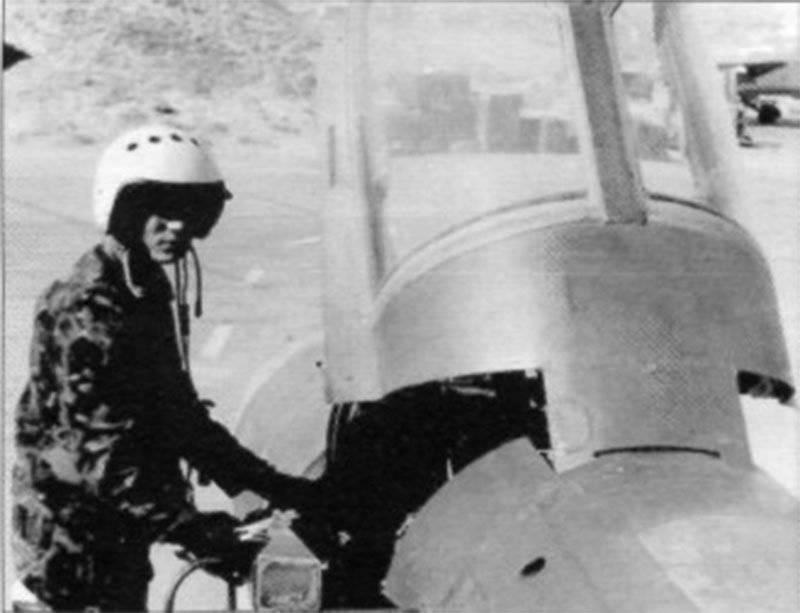
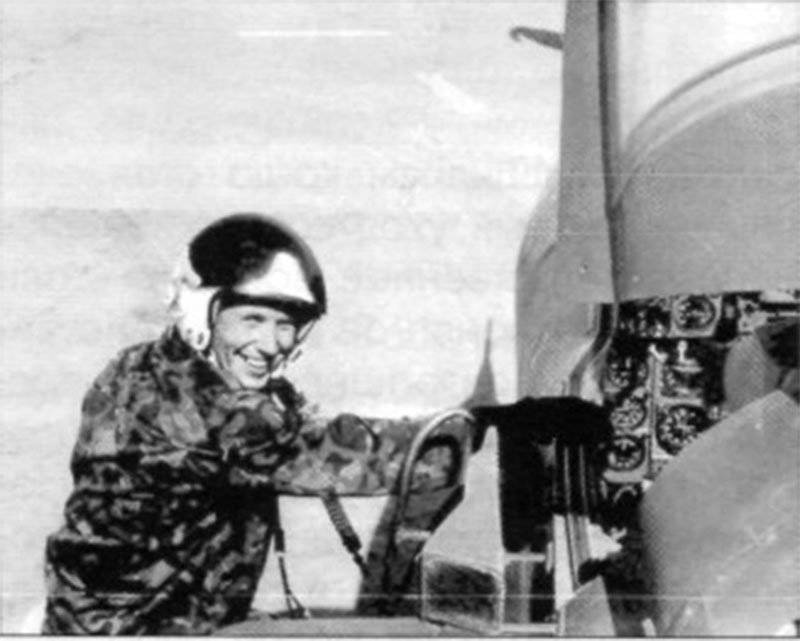
While he was carrying out the maneuver, his plane left the group and slipped the "ribbon." In the next gorge, he noticed a similar object and ombed, but after the lapel, fighter jets came out to meet him, taking the MiG-23 from the adjacent side for the intruder and intending to attack him. It didn’t reach a skirmish - they already figured out at a rapprochement with the help of a radar transponder that this was about my plane.
168 and 976 did not suffer combat losses - the lower altitude limit raised to 4500 and m almost eliminated the possibility of anti-aircraft fire over the target. All blows were prescribed to be applied from the first call, preventing repeated attacks. Flight levels to the target area for the MiG-23 were assigned elevated to 8000-8500 m true height. For the entire "race" there were only a few bullet holes obtained during the "dives" at the exit from the attack and during the approach to landing. However, despite the good training of pilots (in the Shindand squadron of the 168-iap all fighters, except for two captains, had the rank of not lower than the Major), it was not possible to avoid an abundant "bouquet" of accidents and breakdowns.
Within a couple of months after the arrival, the colonel of the 168-iap Colonel Provotorov sat down to the strip. The plane gave an energetic "goat", in two jumps flew to the threshold of concrete, demolished the false and the front rack. The fighter was seriously dented by the fuselage, PTB and both P-60 missiles on the lower suspension nodes. The aircraft was able to recover, despite the "behavior" of the fuselage.
In March, at the landing of the MiG-1988LD group of Mikhail Tsarev, 23 in Bagram had already caught up with the Spark and hit the console with a console. The fighter that flew to the ground got into the aryk and broke the main stance. It was also restored, but did not participate in the hostilities and later went on write-off (the pilots complained that the battered plane "began to fly sideways"). The “Spark” of the perpetrator of the incident, in turn, flew into the fighter’s wing and received a sliding blow to the cockpit periscope, which shot down the rear light and almost hit the pilot’s head. After that, the Spark continued to rush forward and hit the console of the fighter with a forklly chopped up to the spar itself along with the electrical accessories. As a result, the crippled aircraft was spent on write-off under the specious excuse of "poor technical condition due to tank corrosion."
The circumstances of the loss of the MiG-23LD in Kandahar 18 of April remained unclear: when performing a control flight after the pilot’s vacation, the plane collided with the ground on the landing course. Firing was not observed and the cause could be either an accidental hit, or an error or poor state of health of a pilot recovering from a break in flights. Captain P.N. Kruglyakov did not even try to leave the car and died in her cabin.
By the beginning of the 15 troop withdrawal in May, of the total number of 164 airplanes of the 40 Army's air force, MiG-23 fighters were exactly a quarter to one - 41 units. By August, Kandahar had been left, from where the squadron of 976-iap flew home the day before. By this time, the procedure was established for awarding flight crews according to the work performed, estimated by the number of sorties. Respectively left premium sheets. In the meantime, the design of the award went on, the pilot continued to fly in combat. According to the results of one-year work in 168, Iap, captains Simakov, Pastushenko and others, who had flown to missions more than 300 times, one after another received three orders of the Red Star. Sometimes it happened that several awards due to the pilot came in a week or two. The regiment commander Vladimir Alekseev was awarded the Order of Lenin, and the chief of staff, Lieutenant Colonel Vladimir Shegai, who was directly involved in organizing combat work, besides the three Red Stars, had a highly valued Order of the Red Banner.
Given the changes in the situation, the composition and location of the new group from the 120-iap, which arrived on August 19 from Transbaikalian Domna, differed from the previous ones. Two squadrons led regiment commander Colonel Valentin Burakov, but the number of vehicles in them was increased. In the 1 squadron of Lieutenant Colonel S. Bunin there were 19 MiG-23MLD and 2 MiG-23UB, in the 2 Squadron of Lieutenant Colonel V. Belotserkovsky - 14 MiG-23LD and 2 MYG Most of them were concentrated in Bagram, where the fighter group made 23 MiG-29MLD and 23 “Sparks”, and their presence in the relatively quiet Shindand was limited to one duty unit from the 5 squadron. Their main task was to cover the attack aircraft, fighter-bombers Su-2 and MiG-17, mainly working under Kandahar. Later, the Su-27, Tu-24 and Tu-16М22 bombers added to the tasks of the fighters. In order to meet at the very border of the "long-range" flying from the airfields of Turkmenistan and Uzbekistan, the MiG-3MLD, in addition to the missiles, carried three PTBs each.
Enhanced squadrons demanded replenishment of personnel to reduce the burden on people. On September 17, a group of pilots and technicians of the 12-th guards flew to Bagram on An-32. iap from Shatalovo. The regiment was the leader in the MiG-23 fighters, the first in the Air Force to begin operating the newest aircraft at that time (it seemed incredible, but this happened almost twenty years earlier and the twenty-third had more than decent experience in the ranks). The group included squadron command and control, led by a commander, lieutenant colonel Nikolai Lysachek, four pilots and a full technical staff. This allowed to establish shift work with high intensity. Usually in the first half of the day Domninskaya group worked, then it was replaced by Shatalovskaya. Joint flights were also performed, but even in the national team! always flew couples | from 120 th and 32 iap.
The situation in Bagram “under the curtain” was described by the technician of the 120 regiment of the aircraft, Captain V. Maksimenko: “In September, there was still a very tangible heat for + 30 ° C every day. In a dry air, a person dries out like a fish, I myself dropped a kilo of 17 in a month, and then another five. The dust was pestering, omnipresent and all-pervading, and in the afternoon, as if by hours, the wind began to blow, carrying clouds of sand and sharp stones, which cut the face and hands. The two-kilometer-long excess of the airfield and the lack of air makes itself felt, from which the heart continually jumps like a mad man. It is necessary to move between parking lots with caution: for nine years, all the surroundings are filled with mines, and no one really remembers who, where and when mined, and trampled ammunition, projectiles and detonators lying underfoot. Even the time itself in Afghanistan is somehow skewed - in the summer the difference with Moscow was one and a half hours, in the winter - half an hour.
Aviation keeps on hard and sweaty work with a touch of romance, but then you generally feel like a free application to technology. In addition, more than a hundred and fifty planes were crammed onto the airfield, and it was not overcrowded. Already on the third day, right in front of my plane, stopping on a taxiing in front of the runway, the front pneumatic tire exploded with a crash in front of the Afghan MiG-21, the wheel and the drum are momentarily crammed into powerful flames, the stand is bent back with a question mark, and in this form it slips strip and stops up the ass. Lucky not overturned.
The neighbor with my board №51, "lazy" on the landing, pulled off the ground, raised to the "goats" and change the wheel. Immediately after that, sitting on the side of the Su-17, shreds of rubber from the wheels fly to the side, he describes a smooth arc and rolls off the concrete bar with a tinkle and crash on the brake drums, stopping next to our plane. The pilot gets out of the cockpit: "Guys, I'm standing here, do not disturb you very much?"
Several times I watched as the planes "razuvalis" immediately on takeoff and returned to the bare discs directly into the hands of the technicians who had just released them. The Afghan neighbors Su-22 on landing rammed the "Ural", cut off the path through the concrete. He smashed his nose and wing, smashed the car, killing two “merchants” in the cockpit, bargaining a couple of barrels of aviation kerosene in stock (heaven punished ”)!”
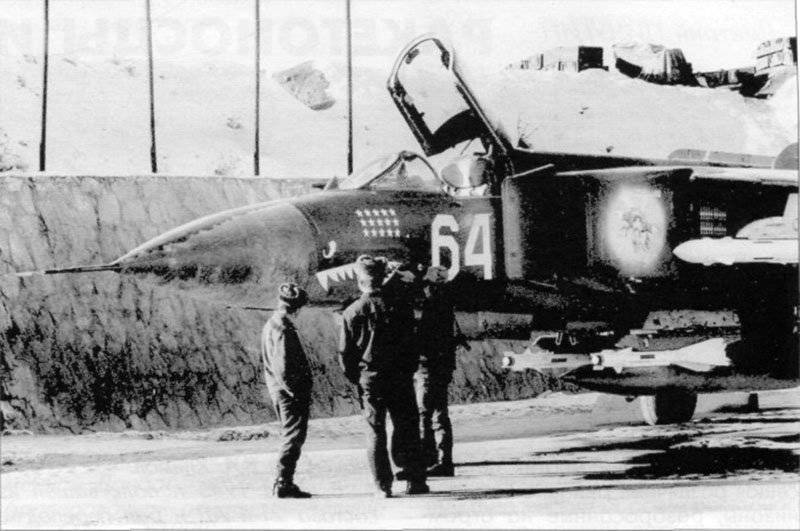
The 120 Fighter Iap fighters performed the first independent combat mission the day after their arrival - August 20. Having engaged in the delivery of planned and preventive strikes, they had to restrain the enemy and prevent his forces from being deployed to the roads along which the troops were withdrawn. The tasks were carried out by systematic “rolling out” of the indicated bomb tonnage squares. As a result, for 1988, the consumption of aerial bombs reached the highest figure - 129 thousand units.
According to 1988, the execution of the actual destructive tasks of escorting strike groups and patrolling was 15% of all sorties, 4% was occupied by reconnaissance, but mostly fighters continued to unwind the roundabout of bomb strikes, which accounted for 80% of all sorties. By this time, strikes were delivered almost exclusively by bombs. A typical load of the MiG-23 was a pair of 250 caliber bombs or 500 kg. The duty link, regularly allocated at the aerodrome, also did not remain without work: its pilots took off into the air to strengthen the fighter cover and its substitution at the meeting of the group returning from the border areas, being “on the pickup” in the event of any unplanned situations. During a visit to Kabul in January of 1989 by a Soviet government delegation led by E.A. Shevardnadze in the sky above the city circled duty MiGs from Bagram, and to protect the government Tu-154 from the Stingers, the road was traced from the border itself by SABs. Covering the flight, the fighters made 12 sorties on that night, and Major V. Magdalyuk flew the most, landing only to change the plane for a filled and equipped one.
The tactics of bombing from high altitudes did not differ in variety and came down to the group leaving the target, after which the aircraft went one by one or in pairs to the object, alternately diving from a dive. Closer to the winter, which stood out early and snowy, more and more tasks began to be complicated by bad weather, fogs and clouds that hid targets. To navigate the terrain, shrouded in dense haze, from which only the tops of the mountains protruded, there were practiced departures by mixed groups, in which Su-17М4, having PrNK with more accurate navigation characteristics, better adapted for solving navigation tasks, provided access to the bombardment site. The “dry” equipment made it possible to conduct navigation bombing at designated coordinates with acceptable accuracy. The route and target coordinates for the fighter-bombers were programmed on the ground, after which the MiG-23 was attached to the leader, leaving the designated point and bombed from horizontal flight by the command “Reset” from the leader. Sometimes the MiG-23 group followed the Su-17М4 group, observing their bombing and dropping bombs right after their departure on the “dry” ones. Most of the targets lay at the Pakistani border, where a destructive barrier was obligatory, especially after the loss of 4 of August of Su-25 of the commander of the Air Force of the 40 th army of Colonel A. Rutskoi. Soon over the Kunar and 120 fighter regiment were attacked by the Pakistanis. Another skirmish with them occurred exactly on the 40 day after the incident with Rutsky.
12 September 1988 g. MiG-23MLD group from 120-iap flew to blow at facilities in the valley of the Kunar River east of Asadabad. Pakistanis have been increasingly active, and the pilots have repeatedly reported on “visual contact” with the F-16, who accompanied the strike groups. Tension literally hung in the air, discharged on this day open skirmish. Gathering over a noticeable landmark (Lake Surubi), the group headed for the border. Two pairs of cover went ahead ahead of time: the targets lay at the very border line, which is why two pairs of cover were allocated. Above the mountain range, in the 50 km north-west of the site of the attack, the komesk fighter squadron of lieutenant colonel Sergei Bunin and his commander Major Nikolai Golosienko occupied the patrol zone, and major Simeon Petkov and lieutenant Vladimir Danchenkov were in the 40 km south. However, the F-16, attracted by their appearance, were already in the air: a pair of Lieutenant Khalid Makhmud fighters from the 14 squadron of the Pakistan Air Force following the MiGs in a parallel course rose from the Kamra base. Within a few minutes, they were informed from the ground that a convoy of aircraft had appeared in the air - a strike group was being pulled up to the target. Over Kuna-rum, she turned north, lying down on a combat course along the border. When the strike group lined up to approach the target, it was located only a few kilometers from the border, and this was used by the enemy. The cover-up went quite far, and nothing prevented Khalid from reaching the middle of the stretched target. The closest to it was the MiG-23LD (board # 55) of Captain Sergey Privalov, the last in the second-level bearing. Emerging from 13 km from him out of thick clouds, Khalid heard that he had a warning station on irradiation "zafonila": MiGs, who were patrolling in a few minutes of flight, were turning in his direction. The plans of the Pakistani pilot is not included. He began to maneuver, in a hurry from a half-turn with a roll of 135 °, he launched two AIM-9Ls and left the battle upside down in 1500 from the attacked MiGs. One rocket went far to the side, but the second “Sidewinder” exploded over Privalov’s plane, showered it with fragments. The shake was the strongest, the pilot experienced a sensitive blow, even his feet were knocked down from the pedals. A large fragment entered the cabin compartment half a meter from its head, the others slashed over the flap and the left console, breaking through the fuel tank-caisson. A whitish plume of fuel stretched behind the plane, but after the first shock the pilot was convinced that the plane was not burning, was in the air and was listening to the rudders.
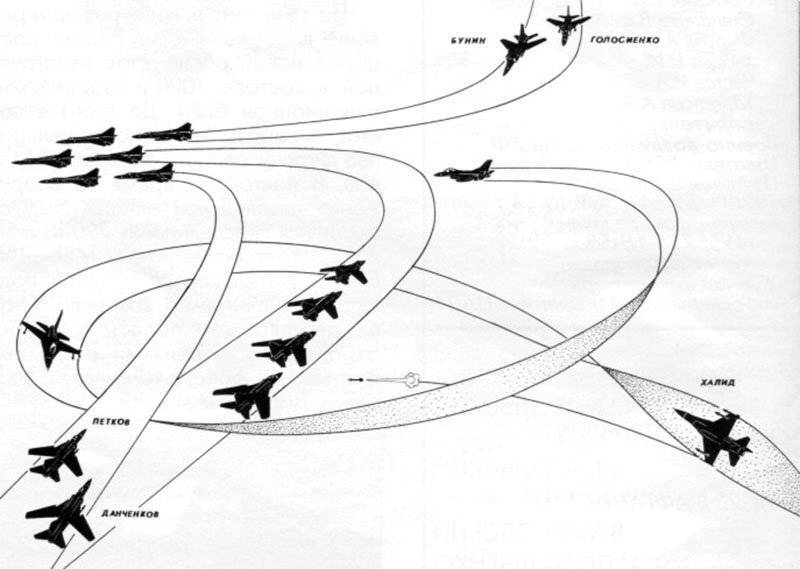
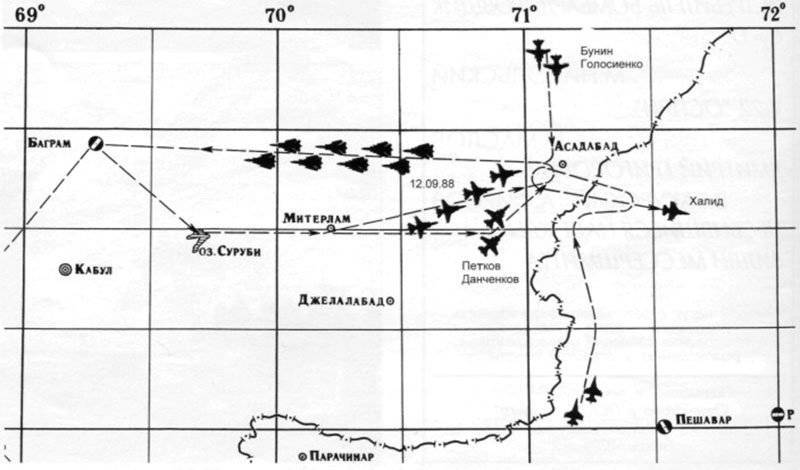
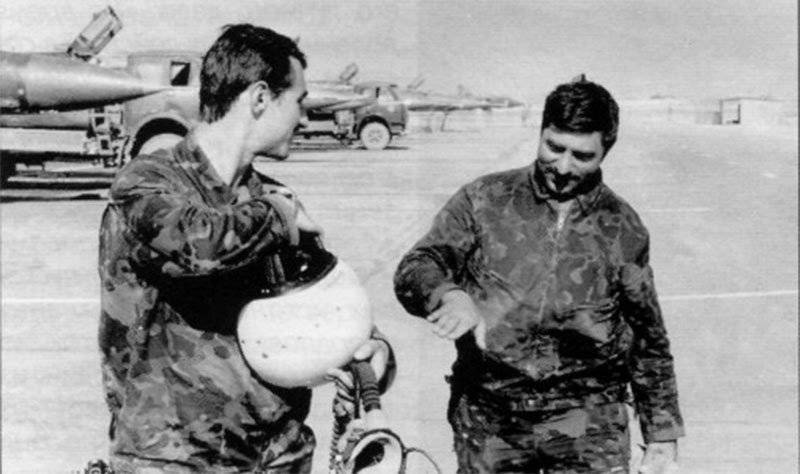
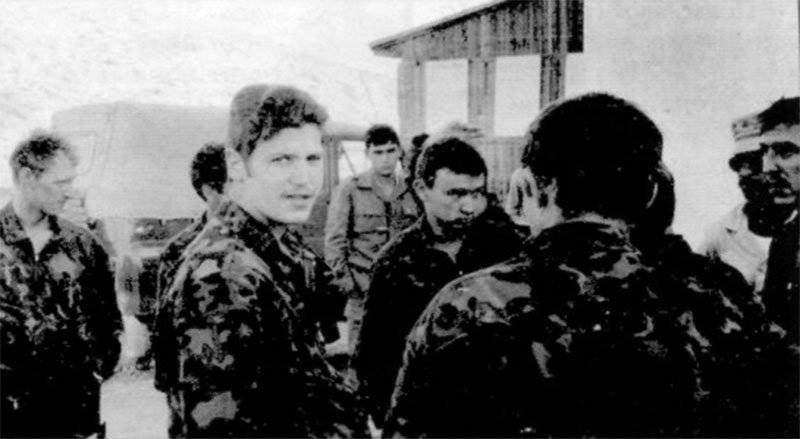
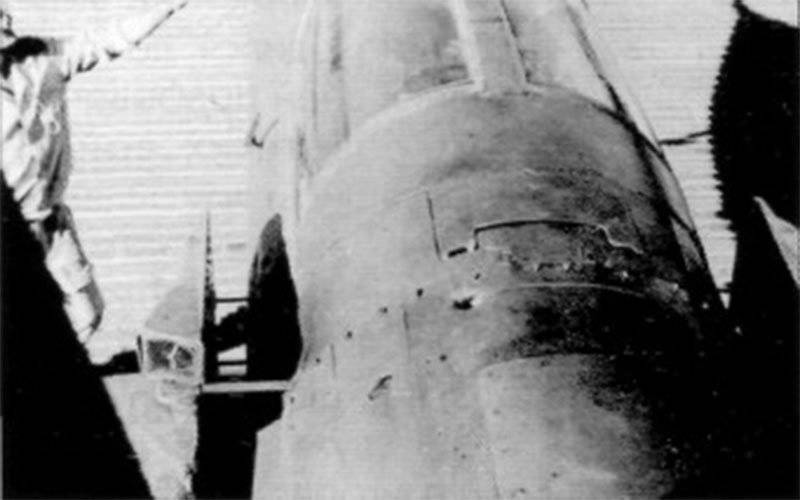
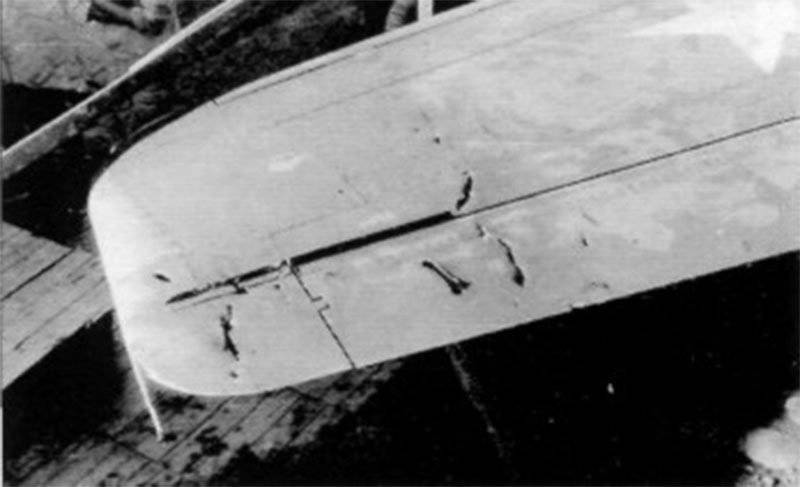
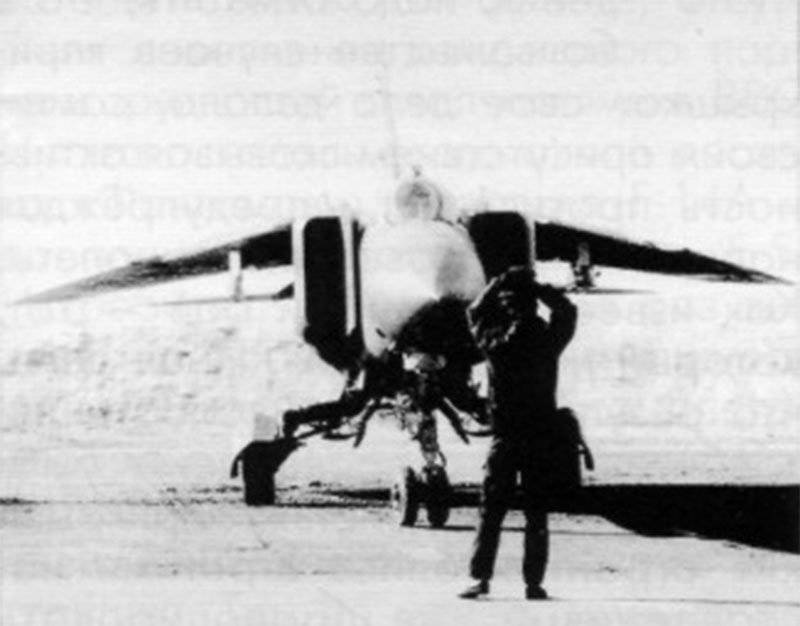
Both pairs of coverings rushed to the scene of the afterburner, a scream and a checkmate got up on the air. Pakistanis were in serious trouble - the R-24P missile launch range was quite enough to combat it even before the border, they even heard the exclamation on the ground: “Let me crash it!” However, it was not possible to level the score - they ordered everyone to rush away from the KP, fearing a fight over a remote area where the situation was not advantageous: the enemy could bring new forces into battle, and the MiGs had a small supply of fuel. The Pakistanis had all the advantages here, from the advantage in forces to the tactical situation, and an open clash with the neighboring state on the eve of the long-awaited end of the war was undesirable. Dropping bombs, Privalov turned home, followed by the rest of the group. Bunin and Golosienko closed the line, and then the F-16 pair reappeared from behind. Pakistanis followed, intending to shoot MiGs on the Dogon, but they could not keep up with them: setting the wings to maximum sweep, they overclocked to the speed of sound at the afterburner (although there was a M = 0,8 limit with the outboard tank). On the approach to Bagram, the padded MiG was allowed ahead so that he would sit down first. He practically had no reserve of fuel: judging by the flow meter, the plane had already lost 1200 l of kerosene. Leaving a wet mark on the concrete, the fighter taxied into the parking lot, where the flow stopped immediately after the engine was turned off - the fuel ran out. Petkov, who had sat down after him, climbed out of the plane and, with annoyance, slammed his helmet against the concrete: “Their mother ..! So that I still flew on the "cover"! Well, he, reptile, kept a sight! ”
In the evening, the Air Force Commander of the 40 Army, Major General Romanyuk, arrived at the debriefing, who was inclined to think that the pilots ran into the fire from the ground - a conclusion that was far more profitable than the recognition of leadership indecision and shortcomings in planning, which led to a group stretching and ineffective cover. Without interception, there would be no problem. But the pilots, in whose eyes the picture was unfolding, insisted on their own. Captain Igor Dedyukhin, who was walking in the third tier, asked why he decided that it was F-16, jabbed a finger at the drawing of this aircraft in the book: “Yes, how ... I just saw this one."
Pakistanis, after a safe return to their base, announced the destruction of two MiGs. Moreover, Khalid dispersed said that he could shoot down all six cars with the remaining missiles and cannon fire, but he was prevented by another MiG-23 pair that arrived in time. Soon the Western press spread the news that Pakistani soldiers had picked up the wreckage of two downed aircraft. This legend migrated to the domestic press. There are other versions of this skirmish, as varied as baseless. In the press, there are also mythic tales about the shooting down of 7 of September over Pakistan by the Afghan MiG-23 and another F-16 victory over the MiG-23, which happened on 3 in November (7 of September, the Stinger shot down the Afghan An-32, but this happened at Kunduz in 200 km from the border, and the November 3 battle took place during the interception of the Afghan Su-22). In reality, the 40 Army in air battles did not lose a single MiG-23, and indeed for the 1987 — 1988. combat losses of aircraft of this type was not. Contrary to the assertions of some domestic authors, the twenty-third Afghans did not have at all.
A month after the September skirmish, it almost reached air combat between Soviet and Pakistani fighters. This time, the Pakistanis acted defiantly, apparently intending to repeat the recent "success." October 15 strike group of Soviet aircraft went to the border strip for a strike, when appeared near the F-16. The enemy was definitely looking for a battle: a pair of alien aircraft was found in the immediate vicinity - passing right under the strike team. The cover at that time was carried out by the MiG-23 unit under the command of Colonel G. P. Khaustov from the Air Force's 40 Army Directorate. The Slave had already requested permission to fire, but the group leader did not rush to retaliate attack in a frankly unprofitable tactical situation, choosing another option - driving out the enemy with deliberately energetic counter actions, the commander reached the threatened flank of the group and from the sun approached rapprochement, demonstrating readiness to attack. Cutting off the enemy from their group, the "cover" shackled his maneuvers, warning any active urges. Alien fighters were continuously in capturing radar sights, warning of being under threat. Having decided not to tempt fate, the Pakistanis turned back into their territory, and the situation for both sides was resolved by the principle “the best fight is the one that did not take place”.
Colonel Grigory Khaustov was the most productive fighter pilot of the 40 Army, having the number of combat sorties over the 670. By that time, he was already in Afghanistan for the second time. Being a pilot with a quarter-century experience, both times he was sent to "fulfill international duty" from his unit individually: for the first time in the position of senior navigator of the 40 Army Air Force, then senior pilot-inspector. His flight destiny was uncommon by all standards: in his youth, they didn’t even want to call him into the army because of his too short stature - the conscript Hausto did not reach the required one and a half meters. However, he promised that he would achieve his goal and will certainly grow up to join the army. A year later, the medical board recorded an amazing fact - somehow the guy added as much as seventeen centimeters and could go to military service. After serving urgent, after demobilization from the army, sergeant Khaustov went to enroll in a flight school. The guy's dream was to become a fighter. However, he was denied admission now as if not passing by age - he turned 22 of the year, whereas at the school, according to all norms, they were taken only up to 21. Two more years were spent on requests and appeals to various authorities, from the Air Force General Staff to the Kremlin and Nikita Sergeevich Khrushchev. Everywhere they refused, even offered to apply for a "more suitable" admission to the Agricultural Institute. And yet, in the end, by the personal permission of the Commander-in-Chief of the Air Force, reserve sergeant Grigori Pavlovich Khaustov was admitted to pass the entrance exams to the Kachin Flight School. The officer's rank of lieutenant H-mouth was received when he was already 28 years old, and his first commander in the fighter regiment was only a year older.
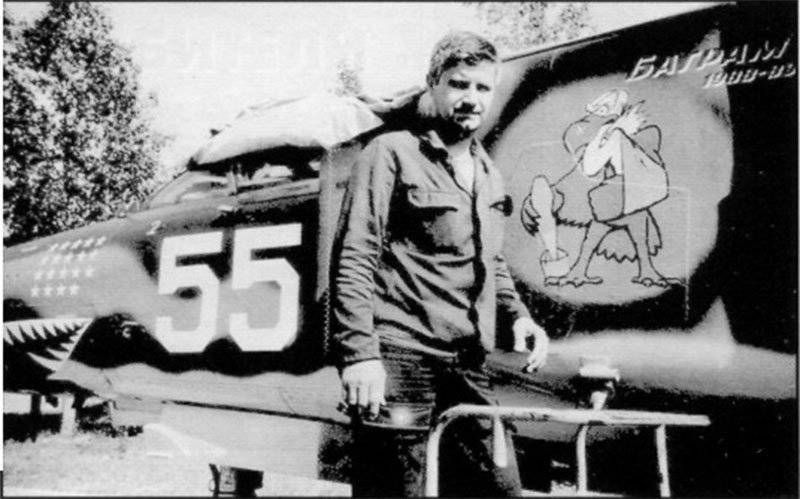
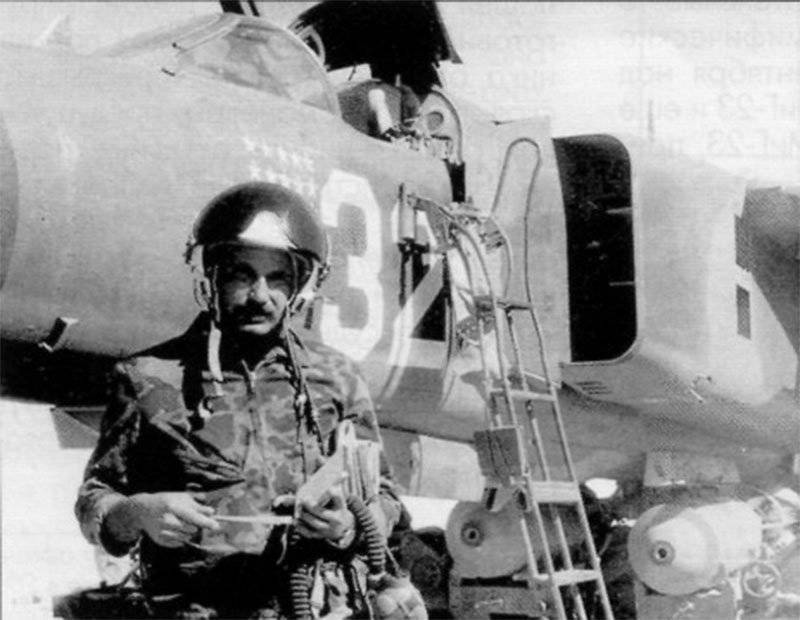
After several unsuccessful reports about sending to Afghanistan, the irrepressible pilot wrote a letter to the XXVII Congress of the CPSU with a proposal to use his combat experience of a fighter in a real situation. His first business trip was awarded the Order of the Red Banner and the Red Star, as well as the Afghan Order for Bravery. As an officer of the control group, Khaustov did not limit his work by staff duties at all - he flew bombshot attacks, drove strike groups, flew to cover and “free hunt”, having more flights than others. In the first term of his stay in Afghanistan, he flew 360 sorties, in the second - another 310. A prudent officer with good organizational skills and extensive flight experience appreciated the command. Among the merits of Khaustov as a leader, Air Force Commander of the 40 Army, Major General V. Kot, noted his penchant for tactical thinking and non-traditional solutions.
In Afghanistan, Khaustov stayed until the last days of his stay there by the Soviet troops, returning home with the 40 Army's withdrawn aviation at the end of January 1989. By this time, Colonel Grigory Khaustov’s aviation service in aviation was already 26 years. Here is an excerpt from his personal file: “During combat operations as part of the troupes, I personally destroyed 35 machine gun nests, 41 vehicles and 17 caravans with weapons, 46 mortars, 17 anti-aircraft mines, 14 depots with ammunition and medications, 27 launchers and reagents shells. During the escort missions, none of the airplanes in the shock groups covered by them were lost.
Evaluating the effectiveness of the fighter escort, it should be noted that in most cases the cover was doing its job, by its very presence restricting the activity of the enemy and preventing attacks on Soviet aircraft. As you know, "the best fight is the one that did not take place." It is another matter that the results of the combat work of the fighter escort were not so visible: the actions of the "covers" were limited to strict instructions "not to provoke the enemy" and even in the case of the obvious presence of alien fighters and their aggressive behavior, they were allowed to ensure that all the precautionary reservations were observed - making sure that the interception will be made without fail over its territory and subject to the execution of a rocket attack exclusively in the direction of its airspace. Shooting in the direction of the border was forbidden - with the range of the launch of the P-24 missiles, they could go far into the neighboring territory and such shooting could lead to a noisy international scandal. “Putting in the pocket” of the enemy, even at a visual encounter under such conditions, was extremely difficult.
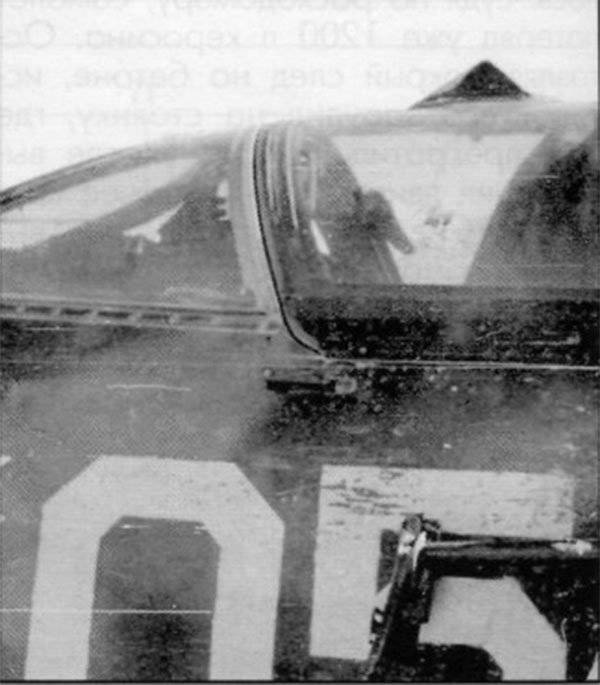
The combat work in Shindand was conducted less intensively, due to which, by the fall of 1988, there was still only the duty link of the fighters. The shift in Shindand was carried in shifts, giving the opportunity to rest in the local “sanatorium” mode. The local four fighters mainly had to carry out air defense of the airfield and accompany strike groups of attack aircraft and fighter-bombers. "Iranians", as the Afghans called their neighbors, were not up to border conflicts: due to sensitive losses on the Iraqi front, the lack of replenishment of the aircraft fleet and difficulties with spare parts in the Iranian Air Force, only about a dozen "Phantoms" remained, a few F-14A and up to fifty more simple F-5. Shindand fighters have repeatedly seen airplanes appearing from the adjacent side on the radar screens, especially during raids in the Rabati-Jali area, but they avoided convergence, keeping a safe distance. Nevertheless, it was in the Iranian direction that Soviet fighters managed to win a “clear” victory.
In September, the air defense of the air base intercepted the air violation of the border in the provinces of Herat and Farah four times, but it was not possible to intercept the targets - they immediately left for their territory, and they were not allowed to launch missiles after them. The game of cat and mouse dragged on, and after several fruitless attempts, it was decided to cut off the offenders from the border and destroy. September 26, after another alarm, experienced pilots Major Vladimir Astakhov and Captain Boris Gavrilov took to the air. After waiting for the violators to get away from the border, they performed a roundabout maneuver and attacked targets from the west, launching one F-7P from 8 — 24 km, as was prescribed, into the depths of their territory. The attack was carried out over a deserted mountain plateau in 75 km north-west of Shindand from a height 7000 m with a radar sight. Visually they did not see the hits, since the enemy was walking in a dusty haze near the ground, but the evidence of victory was the films of the FKP, which fixed the extinct marks on the screens of the sights. Two weeks later, the infantry confirmed the victory, stumbling on the wrecks of two helicopters during a raid in the specified square.
After a skirmish with the Pakistanis in the 120 Iap, several more cases of combat damage occurred: one MiG-23 brought a jammed automatic bullet in the flap, and the lantern of Captain Nikolai Balabukhi’s aircraft (board No.05) was shot on the ground while taxiing out. However, the frequent shelling of the airfield almost led to serious consequences: with a night-time mortar raid, one of the mines fell right under the nose of the 55 board that was already injured in a skirmish with Pakistanis. In the event of shelling, the planes were dispersed at the end of flights, dragging them away from each other, but that time the mine lay exactly on the plane. The plane miraculously escaped serious damage, only upon close inspection found a shredded oiler on the front wheel turn mechanism. A large shrapnel stuck in a stack of boxes of ammunition, others struck the side of a nearby fighter and ripped the fuselage tank "Sparky", from which poured half a ton of kerosene. The next hit could turn the parking lot into a fire, but the unfortunate mine was the last. The misadventures of the 55 board didn’t end there: after another two weeks the high-explosive “five hundred” exploded from the fighter taxiing to take-off, plopped down on the concrete and rolled to the side. The pilot slowed down in confusion, and the technicians who released him after a second of confusion rushed scatteringly, hiding behind caponiers and piles of ammunition. Fortunately, the fuse did not work. After waiting a couple of minutes, the gunsmiths returned to the plane and hoisted the bomb into place.
In addition to combat "holes", there were failures of equipment, although one of the most serious cases that led to the loss of a car, in fact, was the result of lack of maintenance. On the MiG-23MLD No. 54, from the very beginning, there was a defect in the operation of the wheel turning mechanism (IRA) used in taxiing. Malfunction appeared from time to time, being caused by wear of duralumin rollers of a guide by turning the rack. He was not noticed in due time, and on November 8 the fighter Major V. Krivoshapko drew to the side and pulled him off the runway. Taking off at a decent speed on the ground, the plane rushed to the post radio service. To stop the car, the pilot began to clean the chassis, the front desk was folded, and the fighter snubbed the ground at the very fence. On the plane, the nose-end was half-torn, and the airframe was deformed so much that the machine was not subject to repair.
Two weeks earlier, during the landing approach, the MiG-23LD pilot No. 38 captain K. Vorsin did not let the flaps in a hurry. A group that was getting low on 10-15 seconds was pressing behind them, everything in the sky to 10 km was packed with declining aircraft, and a small amount of fuel did not allow us to go to the second round. The touch occurred at a speed of 480 km / h. Immediately the braking parachute came off, the plane without delay jumped out of the band and, breaking through the network of the airfield braking device, caught on its cable. On this "leash", he described the arc and crashed into the embankment of the guard post, where the BMP guard stood. The men on the armor flew head over heels in different directions. There were no casualties and injuries, but on the plane buried in the stony ground, all the antennas and sensors on the nose were blown, the fuselage was wrung strongly up to the cockpit, the front desk was broken and even the air intakes were stuffed with earth. The wing suffered the most, displaced in the plan by 4 ° due to the deformation of the center-section power frame, the box of which was crumpled, and its steel diaphragm of 5-mm thickness was broken in several places, like paper. It took two months to rebuild the fighter, and on the basis of its papers it was considered returned to service. After that, he was overtaken at a repair plant in the Union, where, upon closer inspection, a battered plane was recognized not to be subject to further operation.
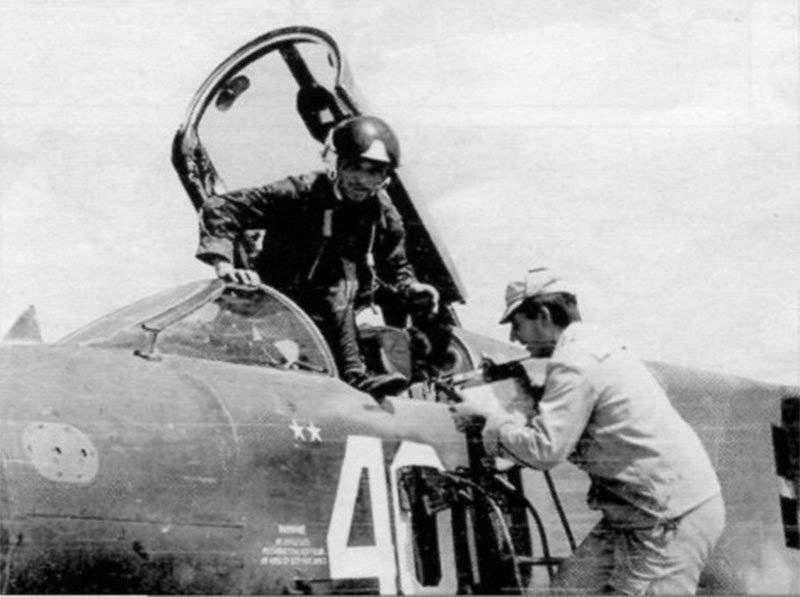
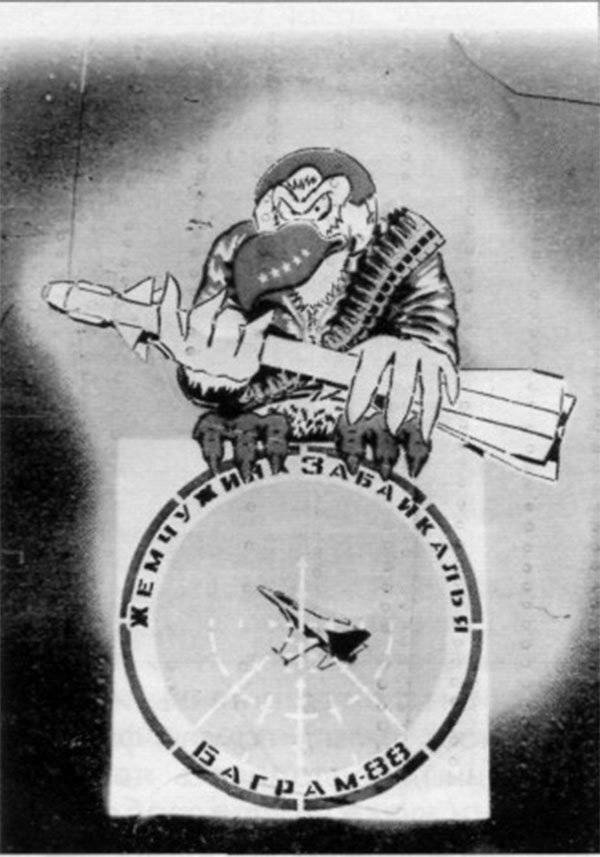
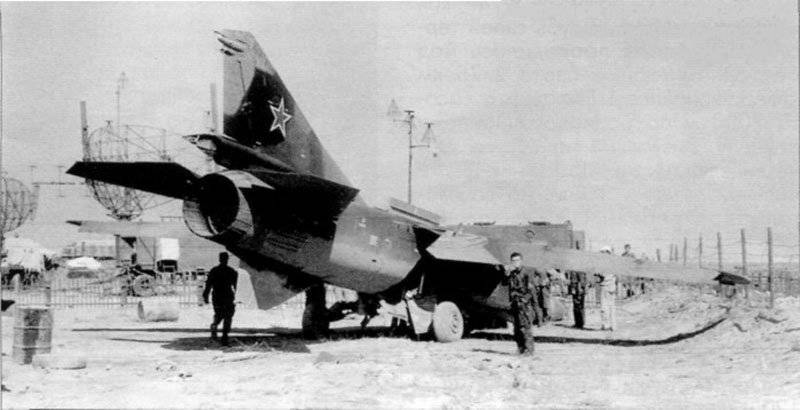
The following incident happened in the Shindand link. When returning from escorting bombers from Kandahar 11 on January 1989, the MiG-23MLD No. 42 of Captain S. Lubentsova refused to pump up the turbo pump - the spring broke, connecting it with the box of drives. The engine began to choke, the pilot launched it several times in the air, but the plane quickly lost height and in 110 km from Shindand Lubentsov had to be catapulted. On the command post about the ejection of a pilot in the desert, they immediately learned from his follower A. Laktionov. Accompanying the comrade descending on a parachute, he could not refrain from commenting: “Well, beautifully you flew out of there, the spectacle is power!”. To save Lubentsov, I had to deploy an entire operation involving Su-25 and helicopters. The pilot's rescue was successful, although he had to spend several alarming hours waiting for the search helicopters. Fortunately, the places turned out to be deserted, although later Lubentsov recalled that he was about to expect "New Year's gifts." The attackers, nevertheless, smashed a car leaving a village lying in the distance, heading for the crash site. MiG-23MLD captain Lubentsova was the last Soviet combat aircraft lost in Afghanistan.
A similar failure happened “under a curtain”, after three weeks, when the 120-iap left Afghanistan. MiG-23 lingered longer in Bagram than the rest, covering the departure of their neighbors - the 378 th assault regiment and the 263 th reconnaissance squadron. The danger was waiting for the aviators on their way home. In the confusion of withdrawal, motorized infantry had already left the Bagram in the New Year’s days. The paratroopers of the 345 regiment advanced to the blocks along the road, providing cover for care. The airfield remained almost unguarded, and it was fortunate that the enemy did not dare to storm the air base, hoping to get it almost the next day after the departure of the Shuravi.
From January 31 lunch, the fighters began to fly into the air, heading north. The regiment had already completed half of the route when the fuel pump failed on the MiG-23MLD with the tail number 32. Major Vasily Khlistun, who was piloting the squadron’s squadron, and Vladimir Belokursky, who was walking along with him in a couple, turned back, counting on the help of the technicians who had left them, who were still at the aerodrome (on this account it was provided that no one left the parking lot and the task was completed only when the planes will take off at their destination). They were lucky - on the outskirts of the airfield there was a broken and half-assembled 54 aircraft, from which it was possible to borrow a fully functional pump. The pair landed and landed on an empty airfield in the dark. By this time, all the premises of the airbase were mined, abandoned cartridges, mines, unexploded grenades and detonators were scattered in the frozen mud, so that the taxiing and parking on which the planes were frozen remained the only place. It only remained to remove the failed DTSN-76А and replace it - work, in normal conditions and in the daytime demanding at least 8 hours. Technicians Oleg Kuzmin and Alexander Sergeyev had to work in the cold, in the dark and touch, hurrying to repair the car. The airfield fired on, and the bullets splashed loudly about the concrete around, one of which immediately hit the side of the lantern with the light on. By three o'clock in the morning, everything was finished, the engine was progressed, the systems and the tightness of the fuel lines were checked. The pair pulled out and left Bagram. They met the sunrise over the Hindu Kush, and an hour later they landed at the landing site of Mary. And the last of the regiment Bagram left the soldiers - the driver of the airfield "launcher". Having started the engines of the anticipated technicians An-26, he sent his Ural to the side, threw a grenade on the seat and ran to the plane at the start. The fighters left Afghanistan.
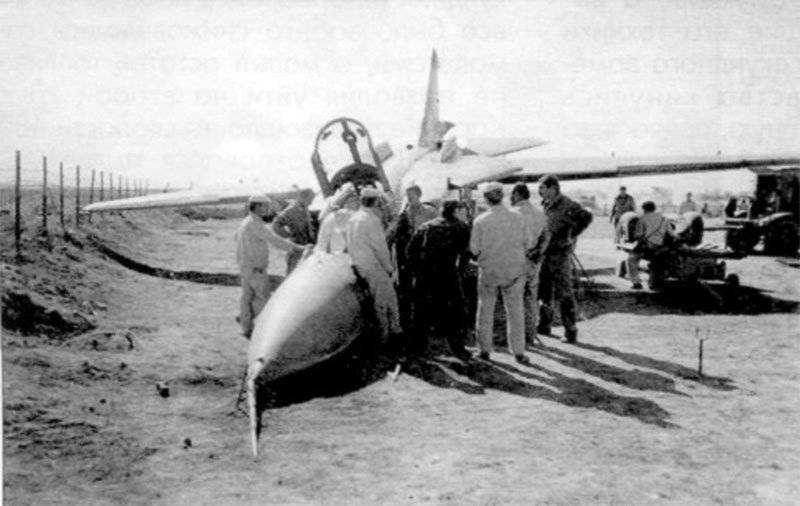
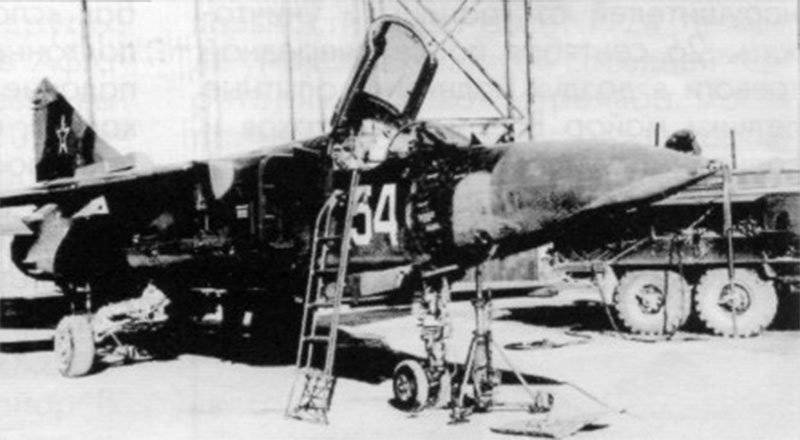
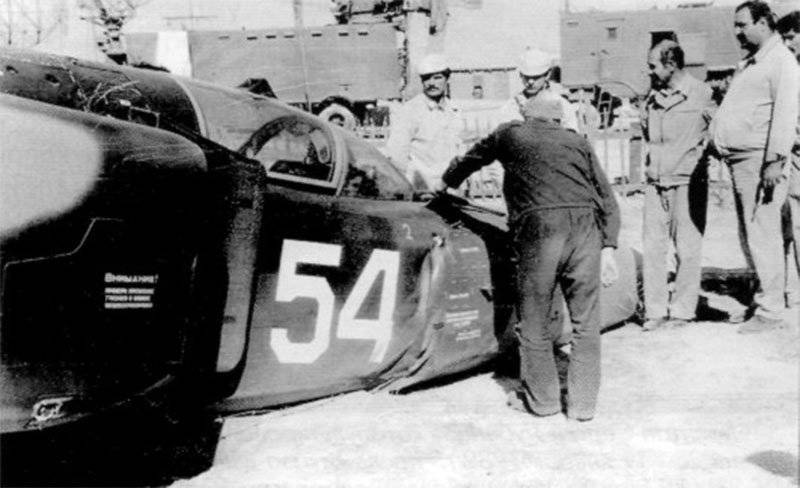
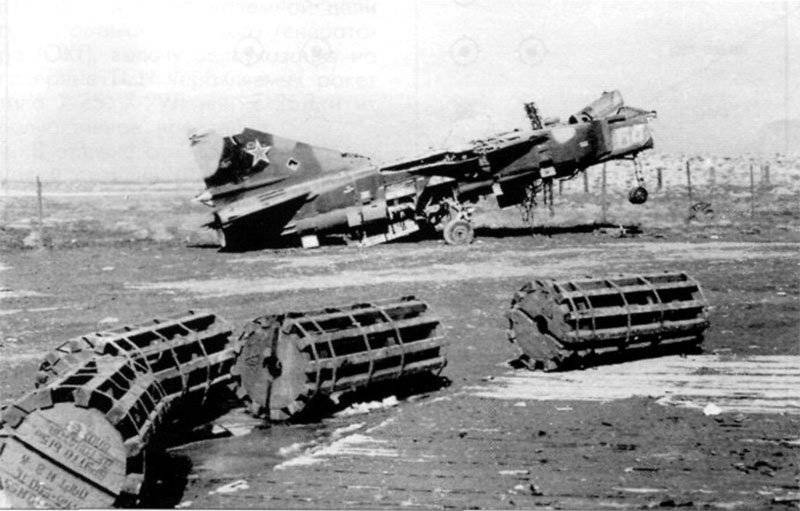
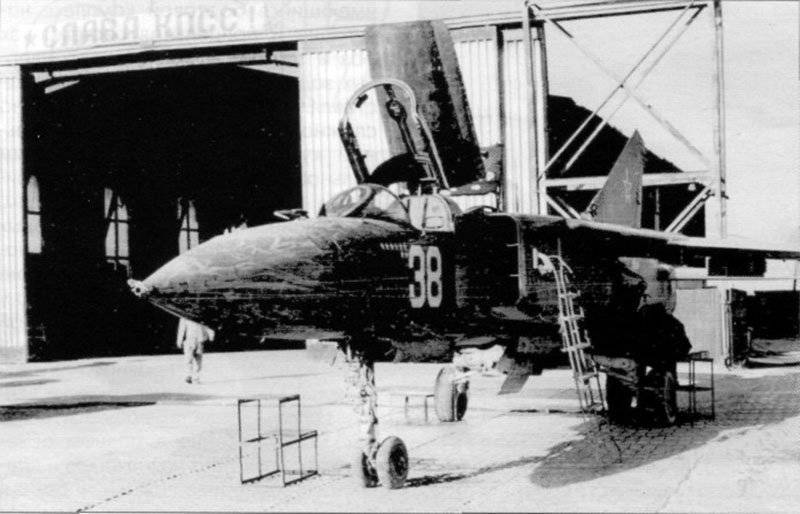
After refueling, the 120 th fighter flew to Chirchik, where it remained ready for another month and a half in case the opposition went on the offensive. However, she did not hurry with the assault on Kabul, continuing the usual tactics of shelling and sabotage, and on March 25, the 120 iap returned to the base in Domnu.
According to the results of the Afghan epic, the MiG-23 proved to be a reliable and robust machine, proving its suitability not only to carry out fighter missions (the “cover” effectively provided the 40 Army air force, preventing possible opposition from the enemy fighters), but also to all and the hardships of the daily service — bombing and assault strikes, air mining and reconnaissance. During the five months of service of the 120 th campaign, the tasks were distributed as follows: 37 of the existing MiG-23 aircraft carried out 5730 sorties, and 1 squadron had 3950 sorties and, accordingly, 2350 flight hours. Of these, 3300 sorties were carried out on bombardments, during which 1300 tons of bombs were dropped, 529 - on cover and 121 on reconnaissance. The average intensity was 35-40 departures per shift with the production of 25-30 t bombs, and even in the duty link there were days when it was executed before 16-18 departures. Six pilots were awarded orders of the Red Banner, 30 awarded orders of the Red Star.
The quality of the MiG-23 confirmed the analysis of the reliability indicators of aircraft, conducted by the Air Force Engineering Department of the 40 Army and 73 VA. In difficult conditions, the MiG-23 proved to be quite reliable and durable aircraft. Due to the good operational suitability of the aircraft, most of the work in preparation for the flights could be performed from the ground, without the use of bulky stepladders and supports, which reduced the complexity and duration of maintenance. Ensured in the modification of the MiG-23ML reliability of the design and the main units, in combination with a well thought-out device requiring maintenance nodes, significantly reduced the labor costs for the preparation of equipment.
With the inevitable minor failures, which were not followed by the high rate of work and exhaustion of people who conducted airfields on 12-16 hours a day, the combat readiness of the fighter squadrons remained at the level of 93-94%. There were more than enough reasons for complicating the operation: heat, melting and oxidizing the lubricant of the nodes and threatening to overheat the equipment and boil the batteries, sand and dust constantly hanging in the air, getting through the sites and exhausting the sites (the winds from the salt flats brought caustic salt dust that caused corrosion even of parts that were considered to be stainless in the usual conditions). Particularly annoying dust and dirt, clogged fuel (in a ton of kerosene was collected to 0,5-1 kg of all kinds of garbage). In a matter of hours, black mucus clogged the filters, threatening fuel automation failures, forcing them to wash every 5-10 h. Dust and sand blocked the hinges, led to the deterioration of moving joints, impaired the operation of the bomber locks, which led to jamming of their kinematics. Failures occurred due to dust and sand getting into the air-conditioning and air intake control systems, deposits clogged up the fuel automatics jets, preventing the normal operation of the engines, electrical equipment “burned”, a starter happened.
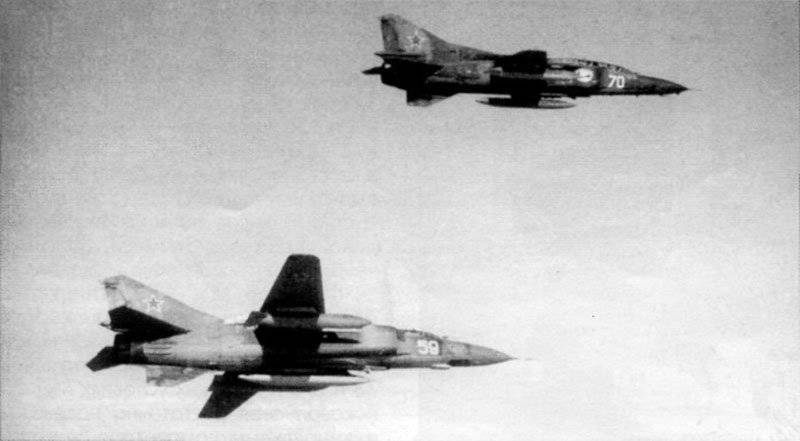
The tightness and congestion of the airfields caused a lot of trouble, along with the complexity of the landing scheme that led to overheating of the brakes, landing gear breakdowns, and "razuvanie" aircraft due to the burst of pneumatics, flew on the stones brought by the wind, "Afghan" on the strip, was common. Glare was caused by the quality of the glazing of the MiG-23 lantern, which quickly turned yellow and lost transparency in the sun.
At the same time, the number of defects in aircraft equipment and electronics of electrical equipment was unexpectedly small, and the dry climate and regular operation had a positive effect on it (it is known that constant work and supervision have a positive effect on the reliability of complex equipment, unlike its use from time to time ). However, there is a more prosaic explanation: as already mentioned, MiGs predominantly worked on ground targets, which did not require the use of the entire complex of onboard equipment and only a small part of it was used. The entire sophisticated electronics of the fighter's sight-sighting system was not activated when the bomb-assault strikes were applied, neither the radar station, the heat direction finder, nor the command-line guidance line, which produced the largest share of failures and malfunctions in the operation of the fighter units at home. To accomplish the tasks, the fighters did with a small rifle scope, which was fairly simple and reliable in operation, and even managed without special equipment at all, carrying out manual bombing in a visual manner. Accordingly, the equipment that was not turned on could not “spoil the indicators” and the fighter aircraft’s reliability figures looked better than those of fighter-bombers and attack aircraft.
In contrast to the fighters, there was no “extra” non-switched equipment on the attack fighters and fighter-bombers, and the existing on-board navigation system and aiming system served precisely for specific percussion tasks. Those, in turn, were a collection of quite complex equipment with an inertial cursor, laser rangefinder, Doppler meter and analog computer, the malfunctions of which contributed to the machine reliability statistics (the impact of their failures can be estimated by the fact that attack aircraft have sighting system accounted for nine out of ten identified faults). The Su-17 and Su-25 pilots almost always used the existing target equipment in full, in accordance with its purpose and advantages when performing combat missions, however, and with the attendant failures of complex equipment.
Typical options for weapons of the MiG-23 when working in Afghanistan
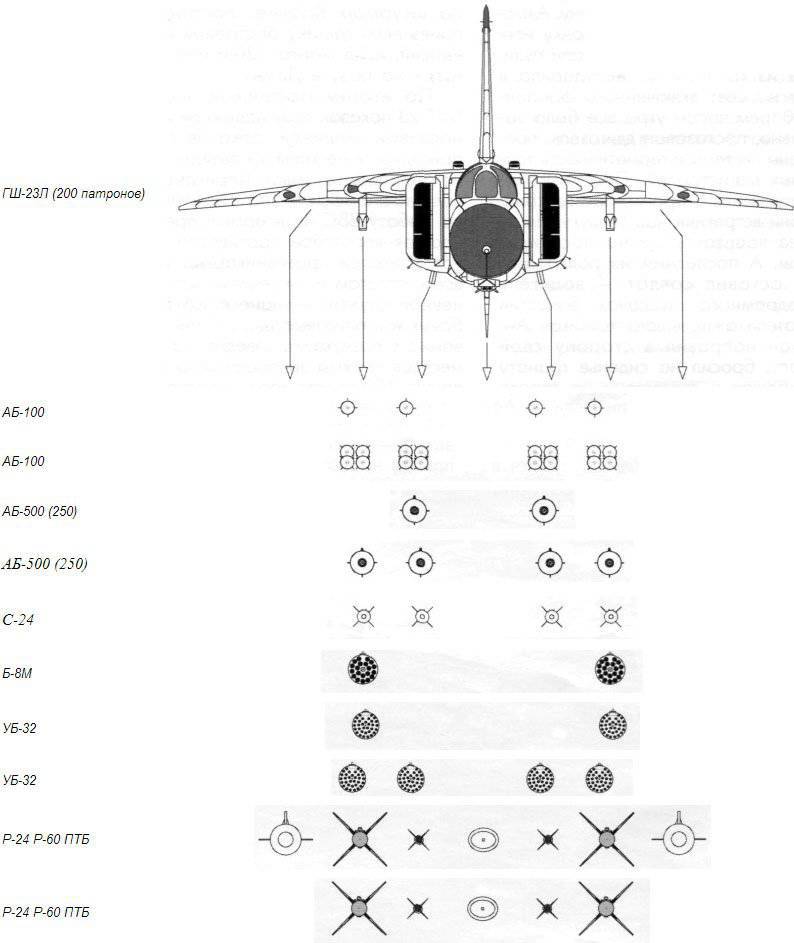
Drawings of Victor Milyachenko

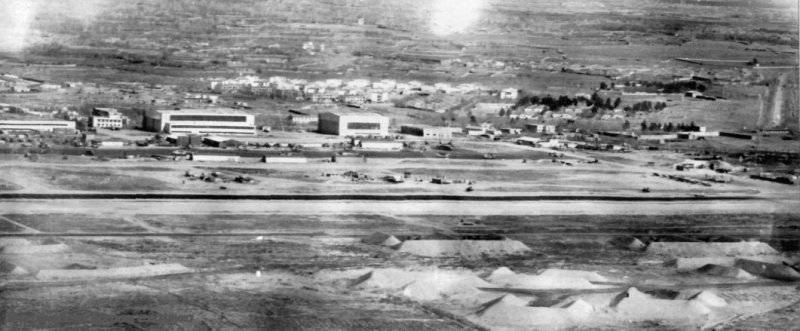
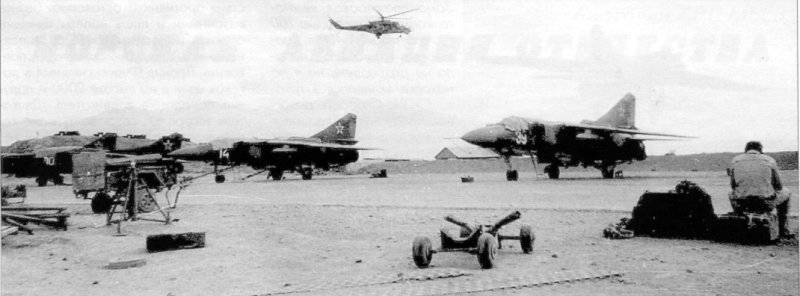





Information